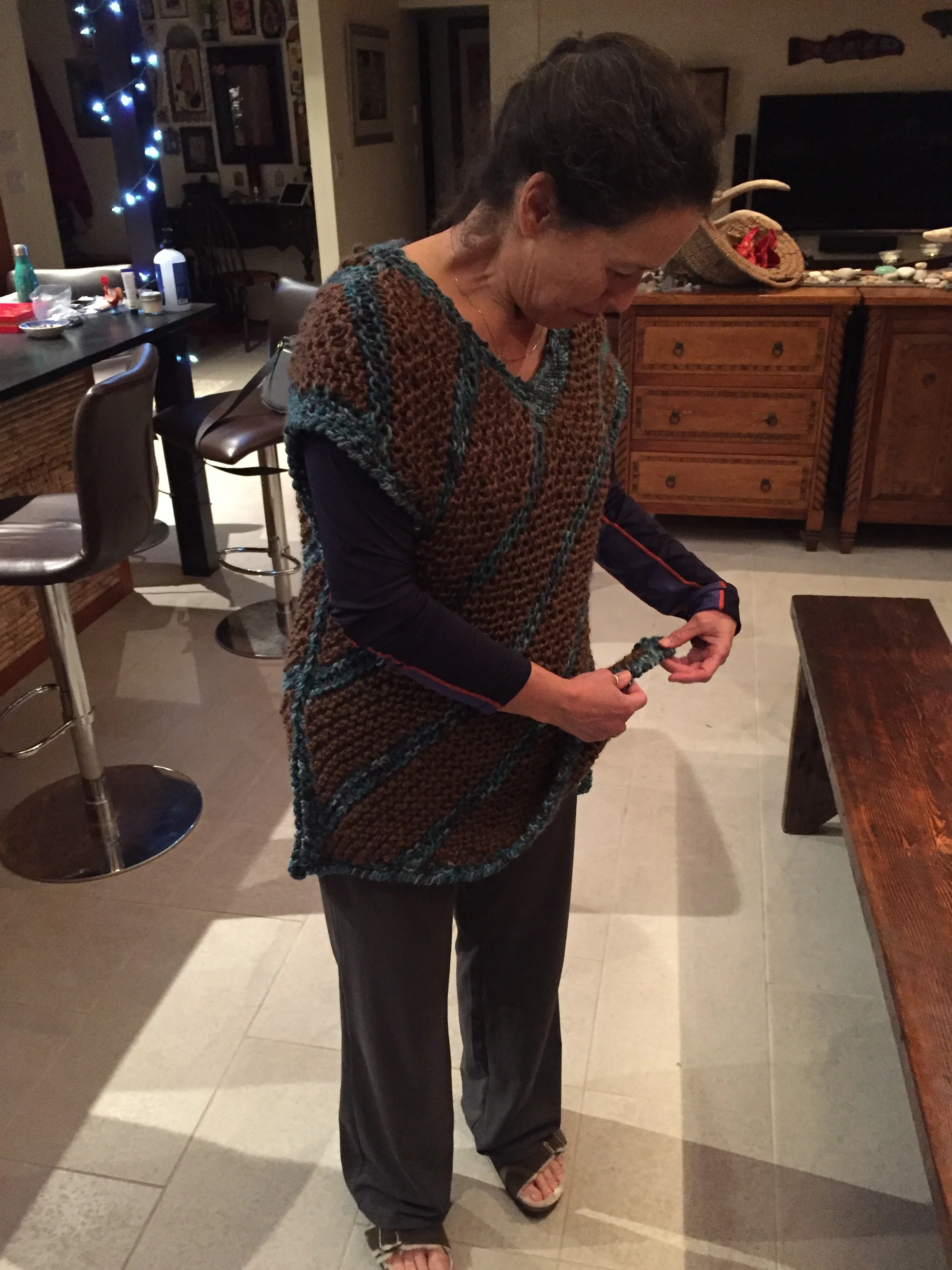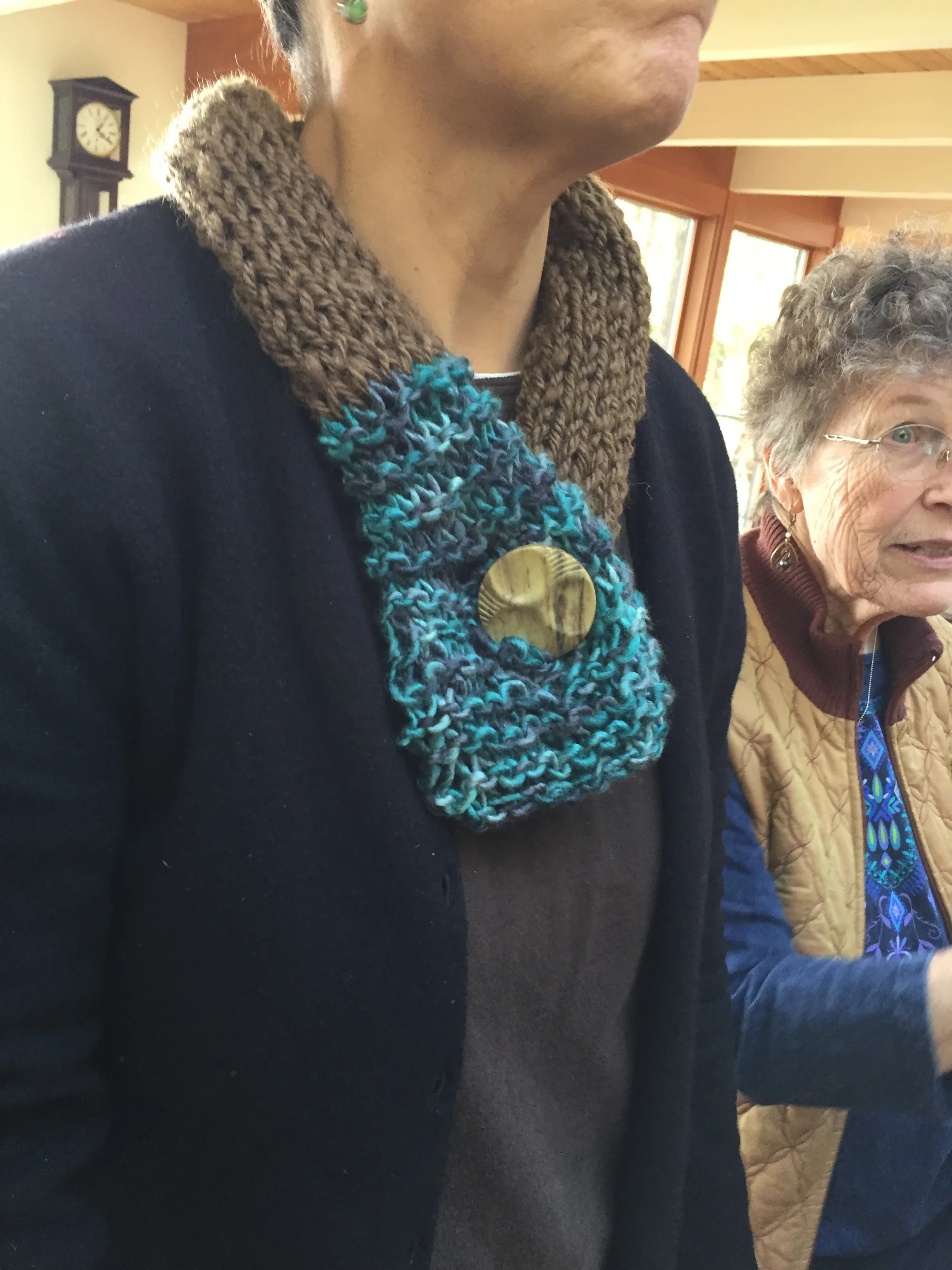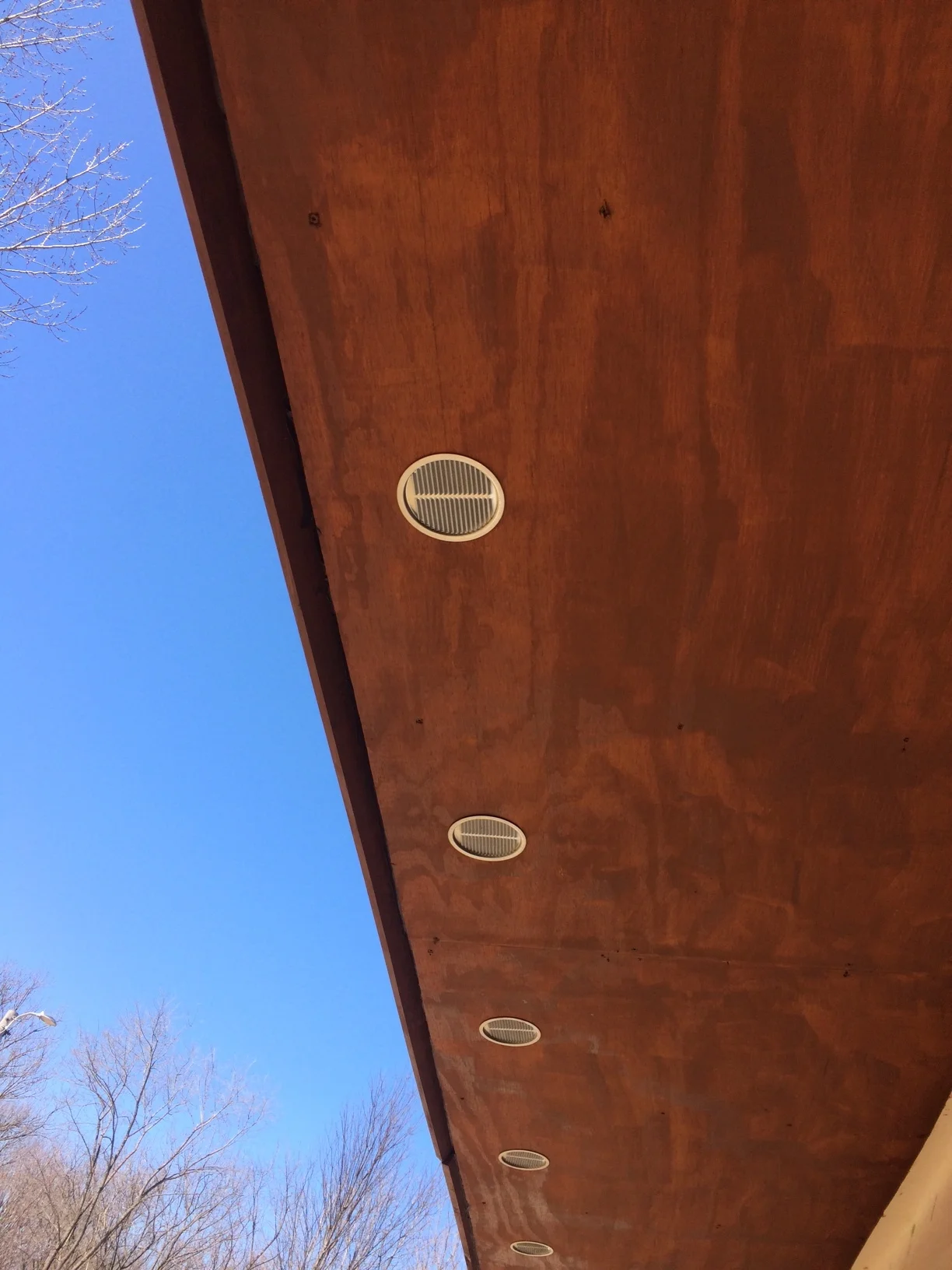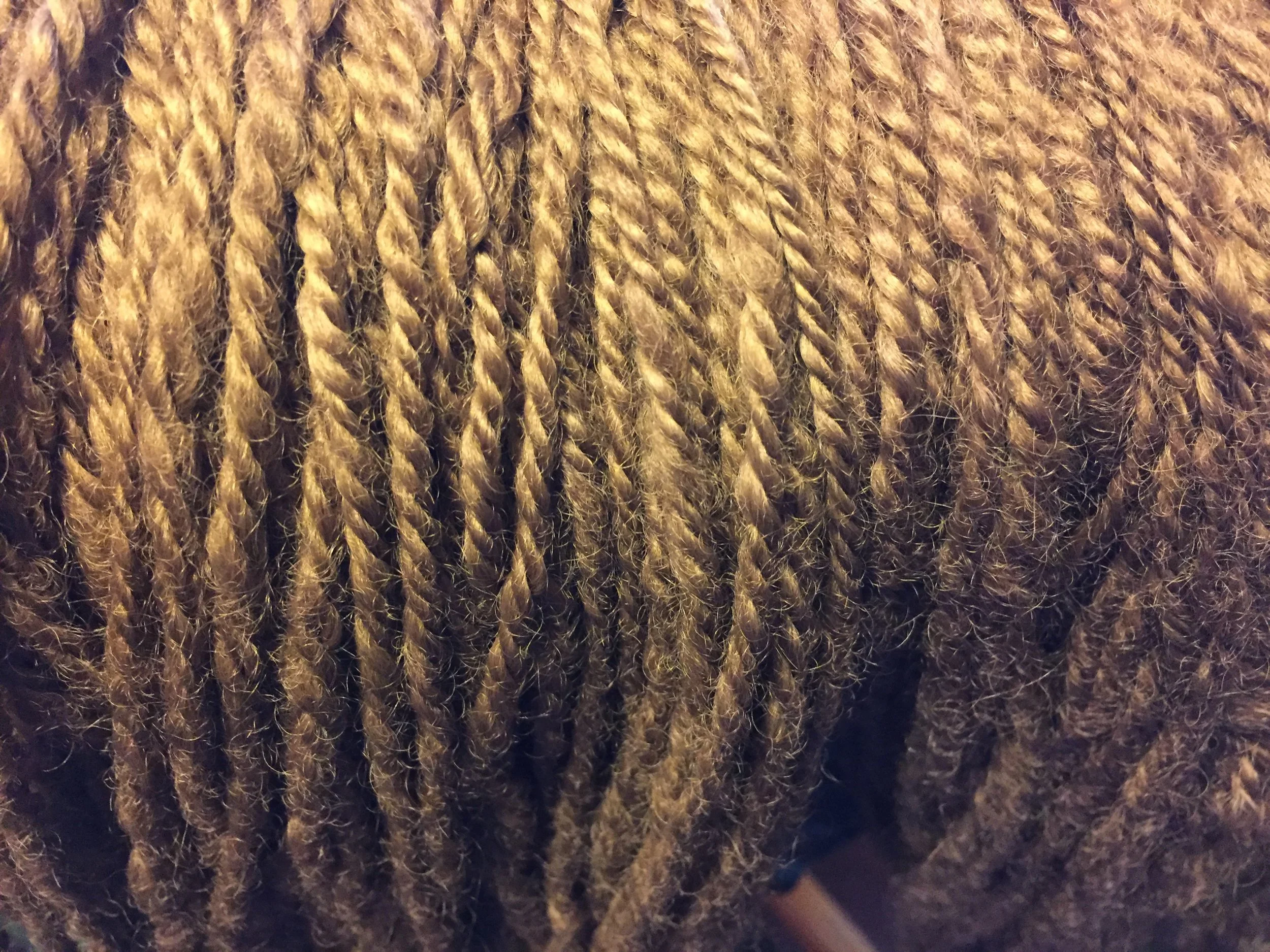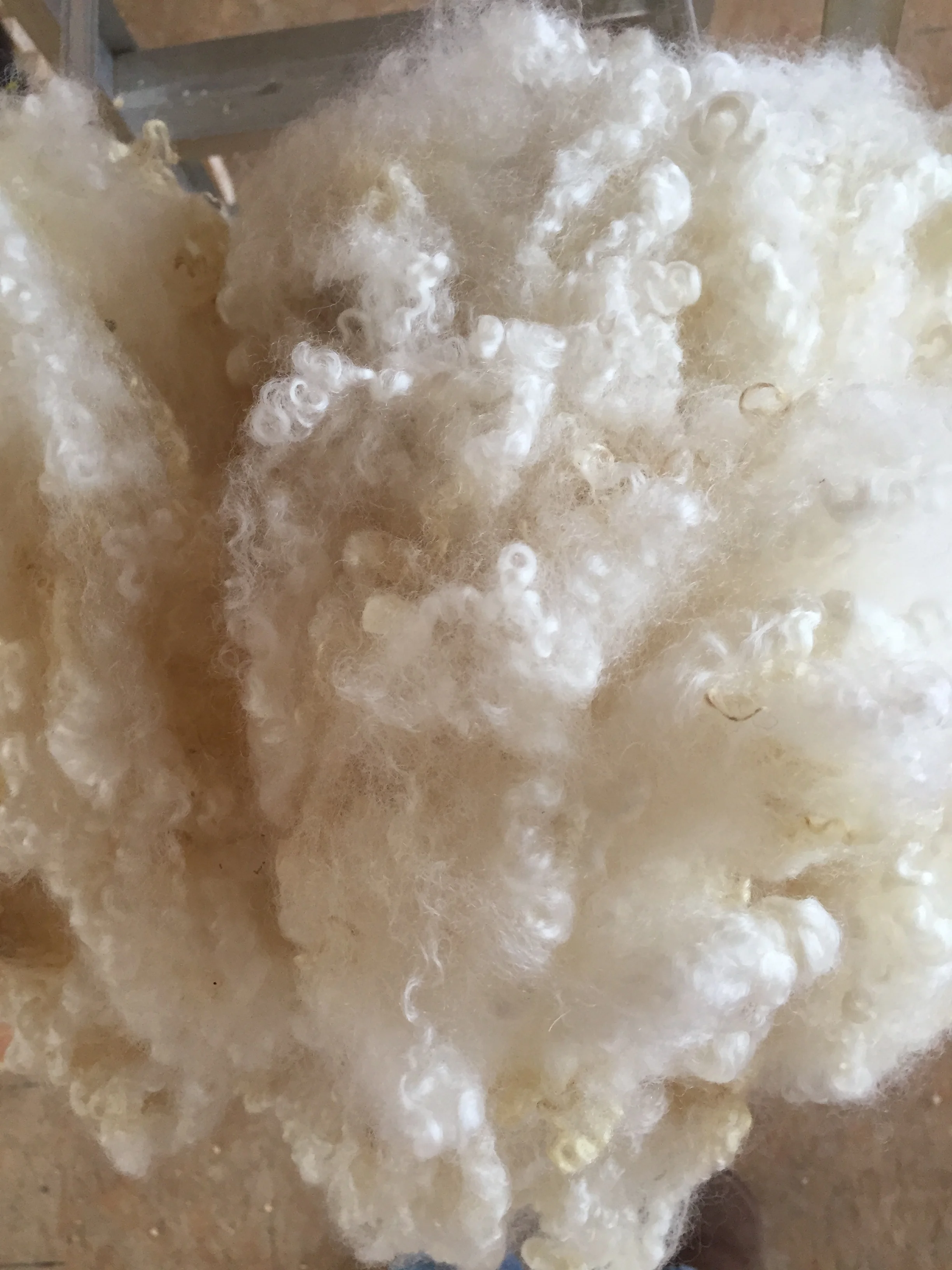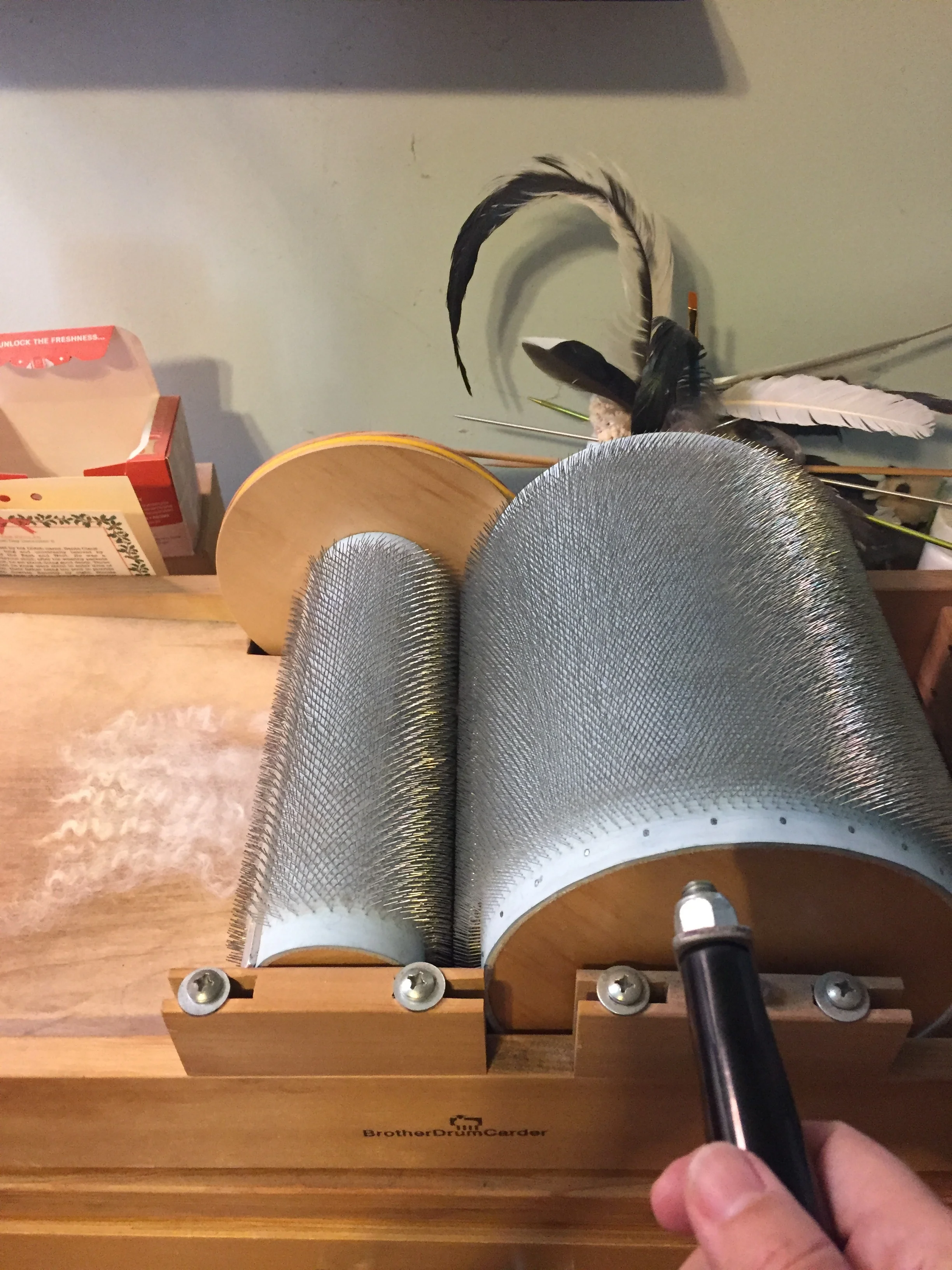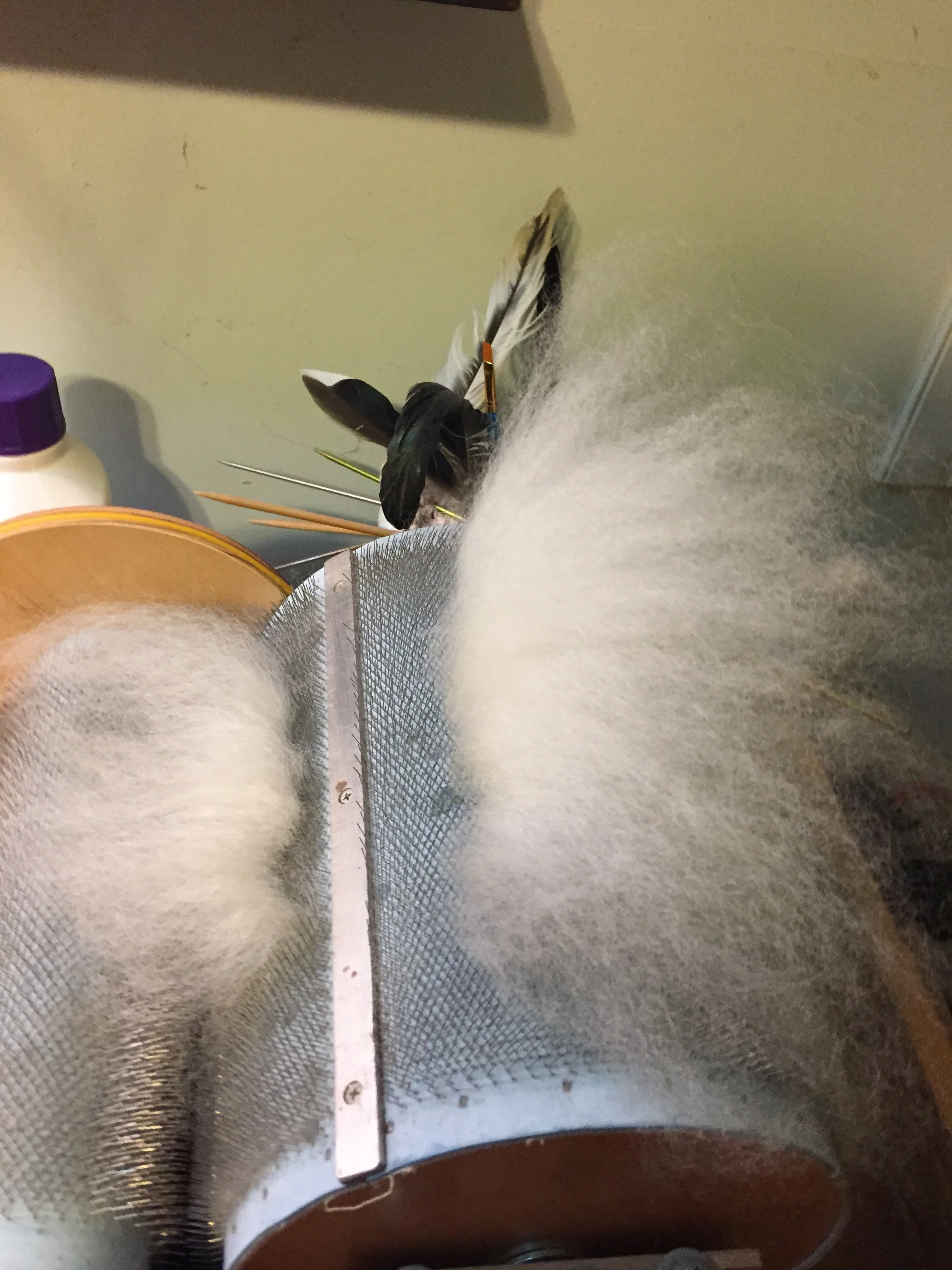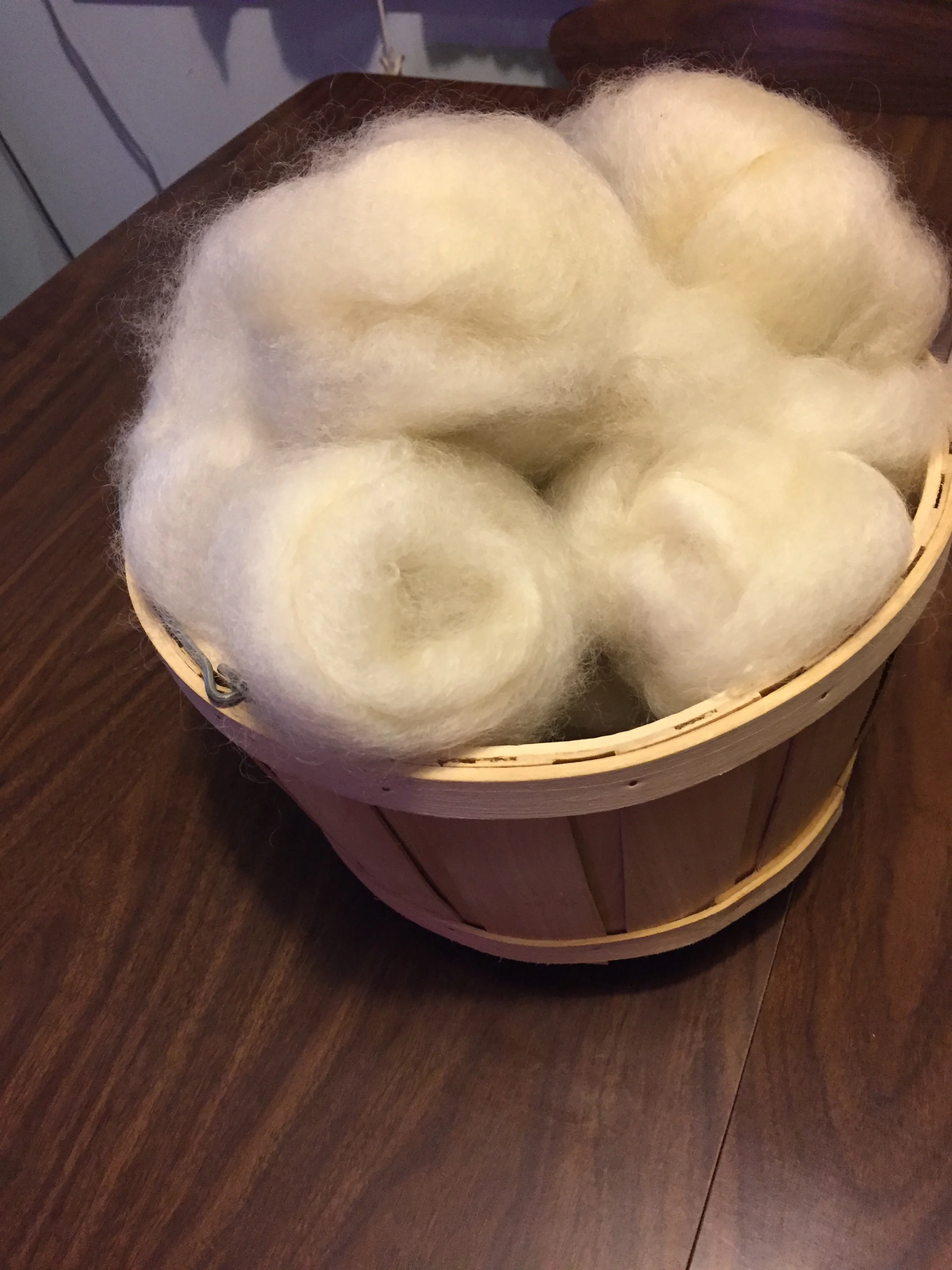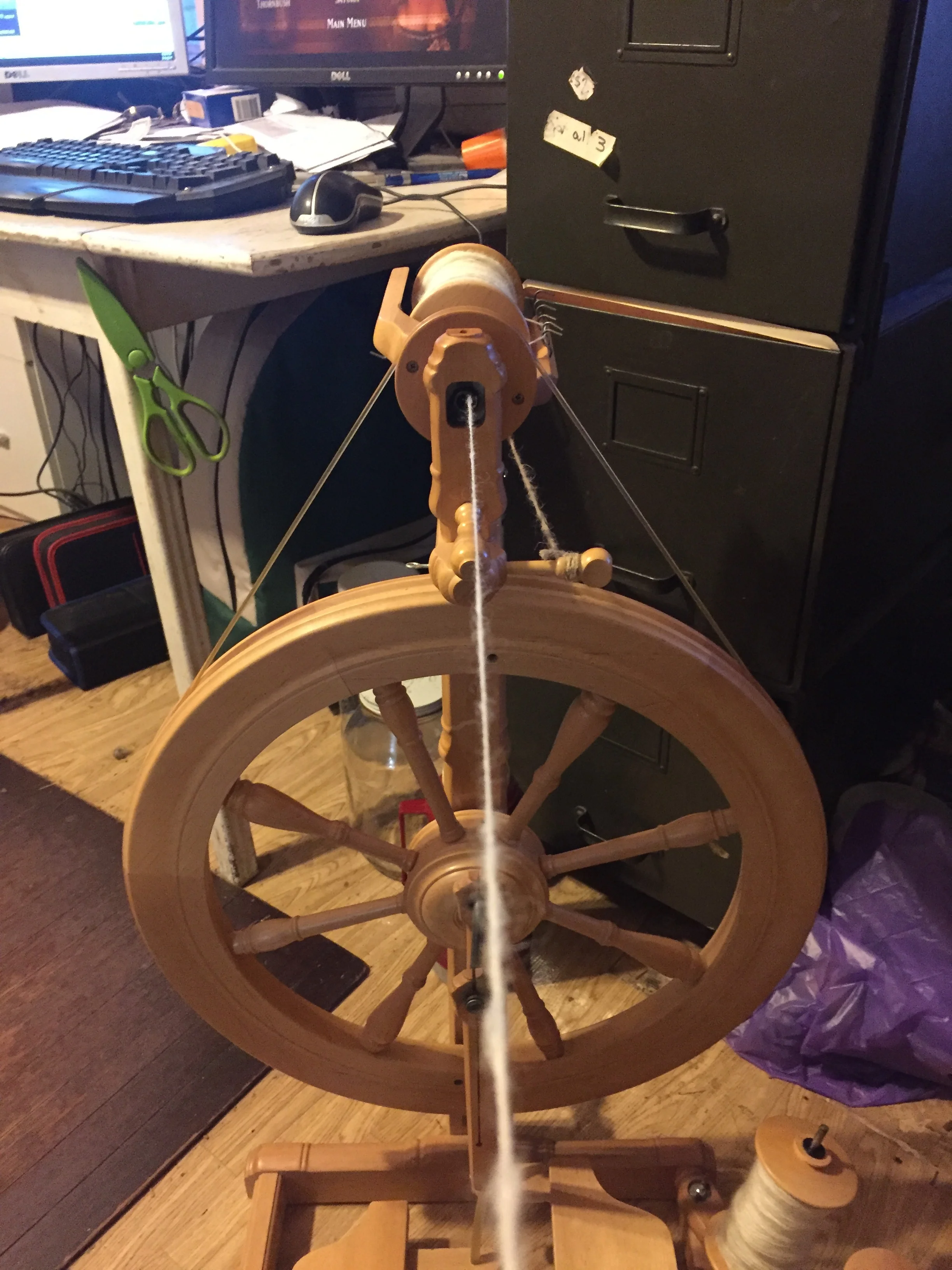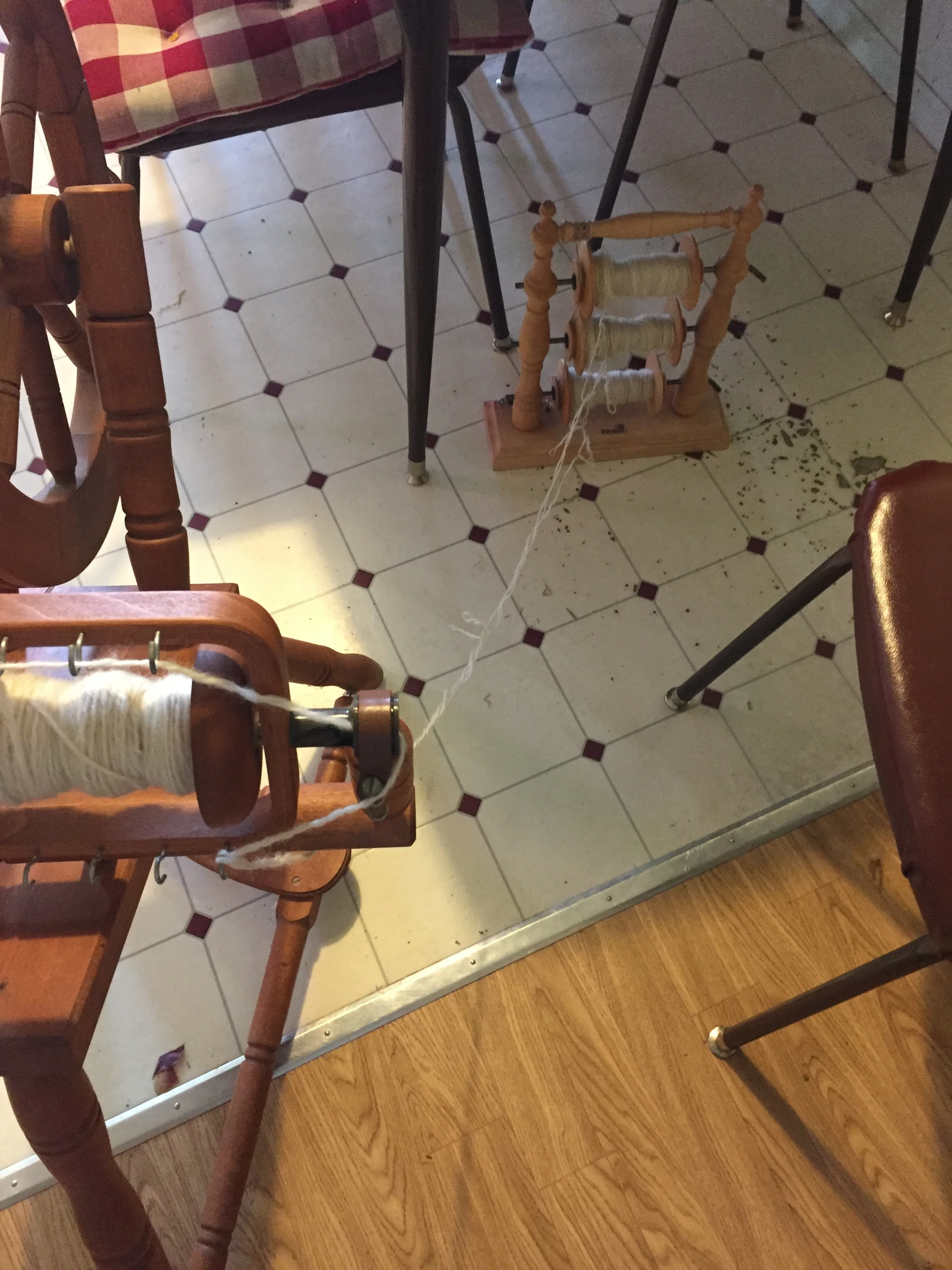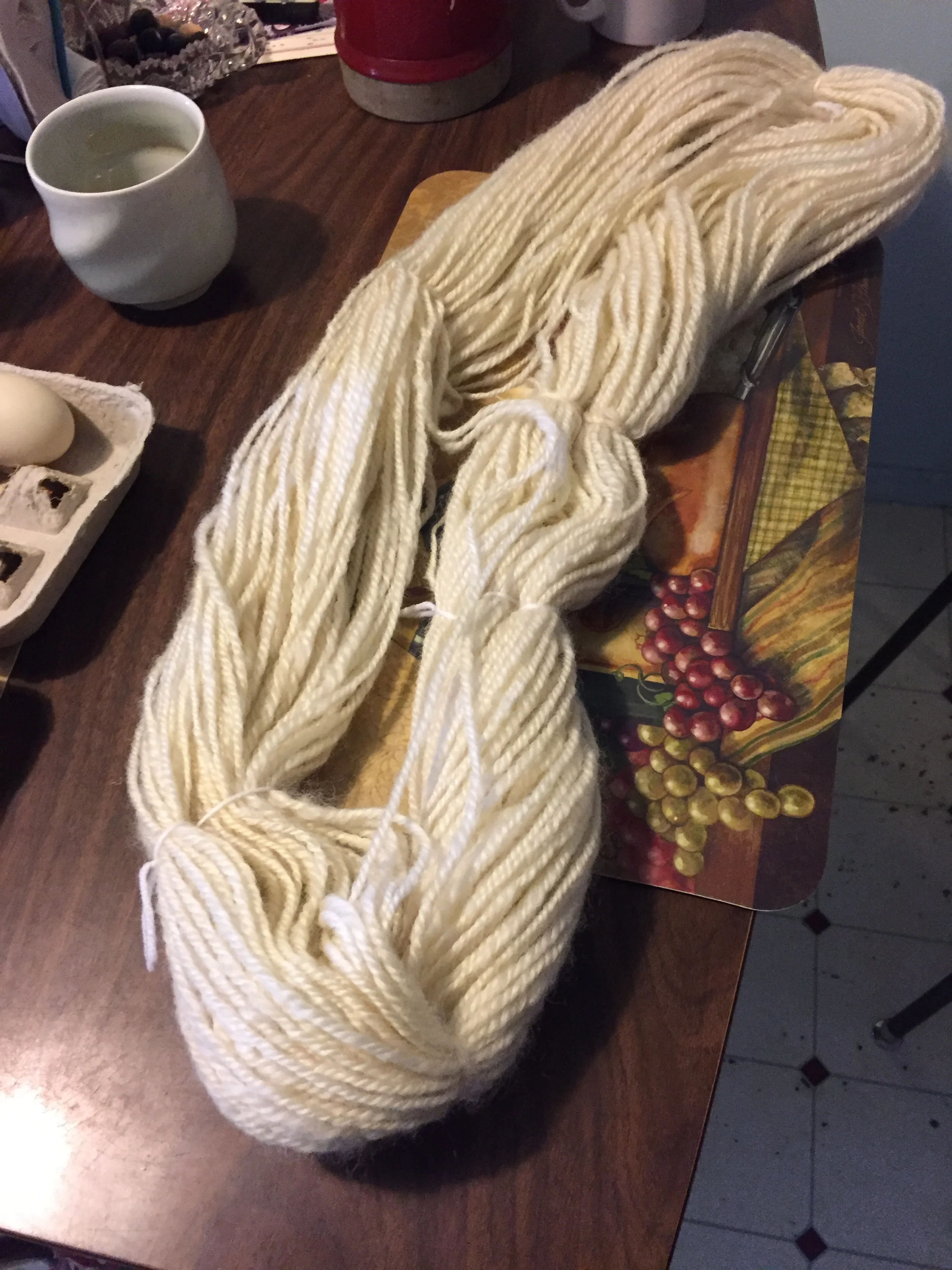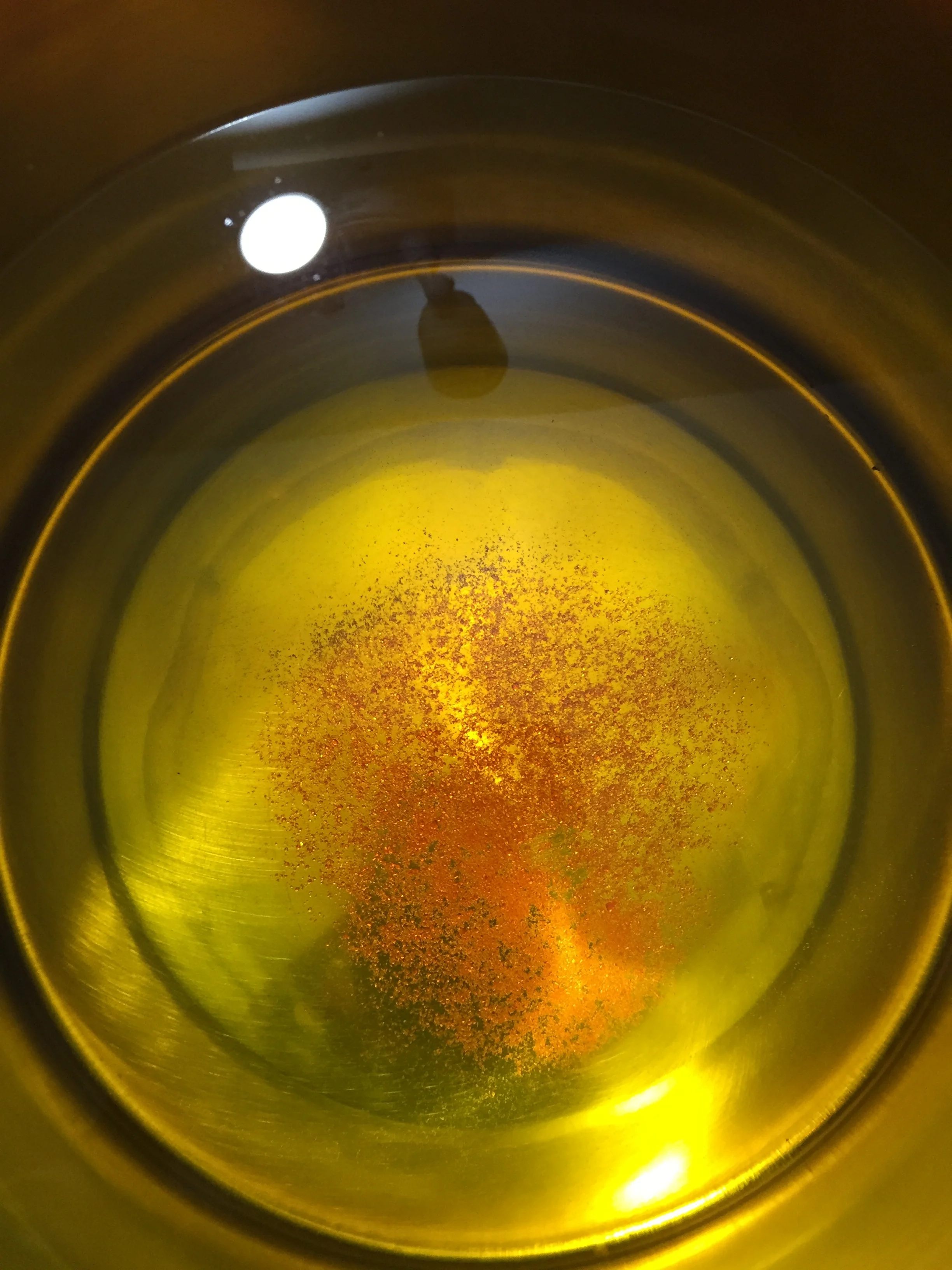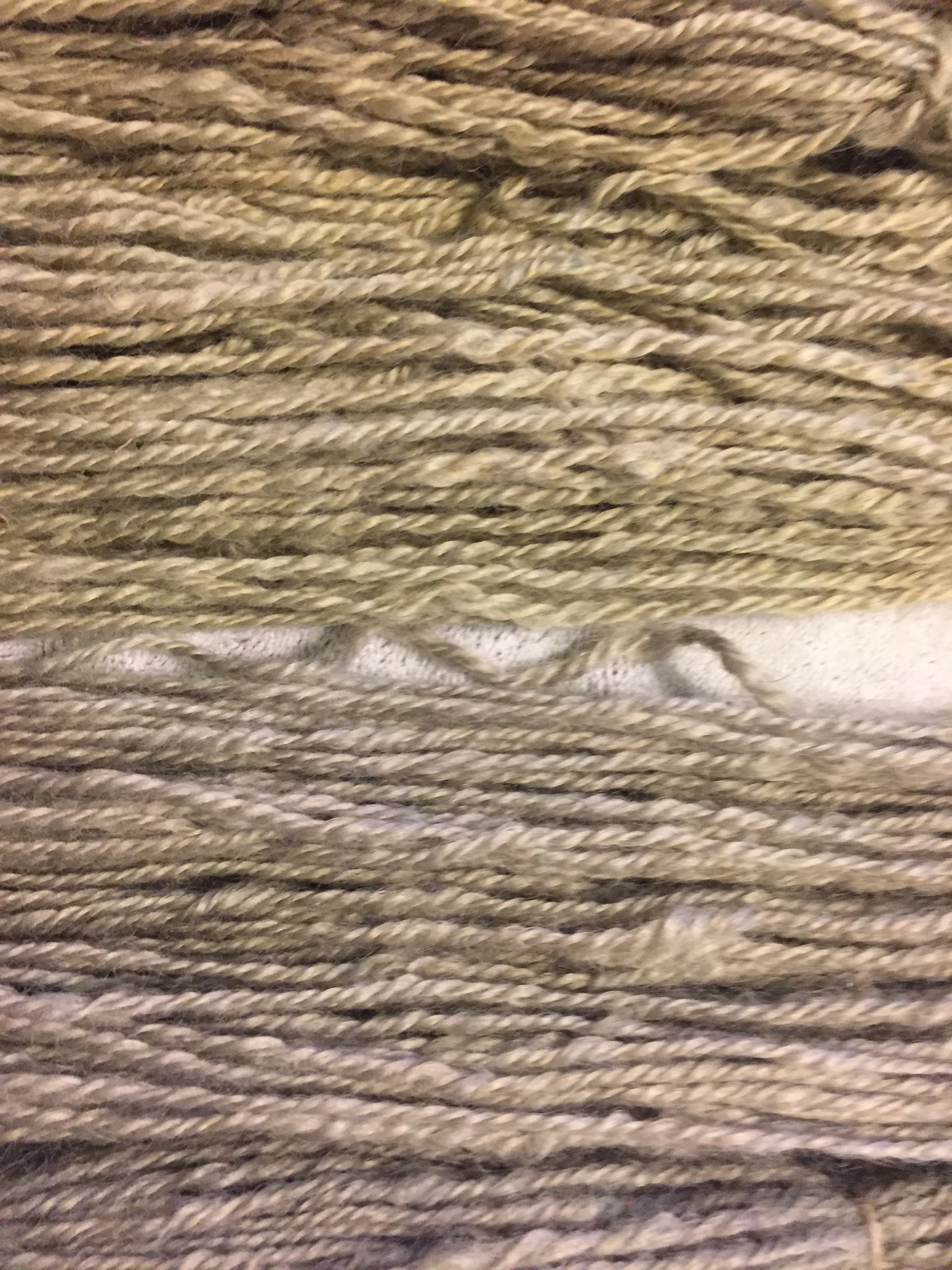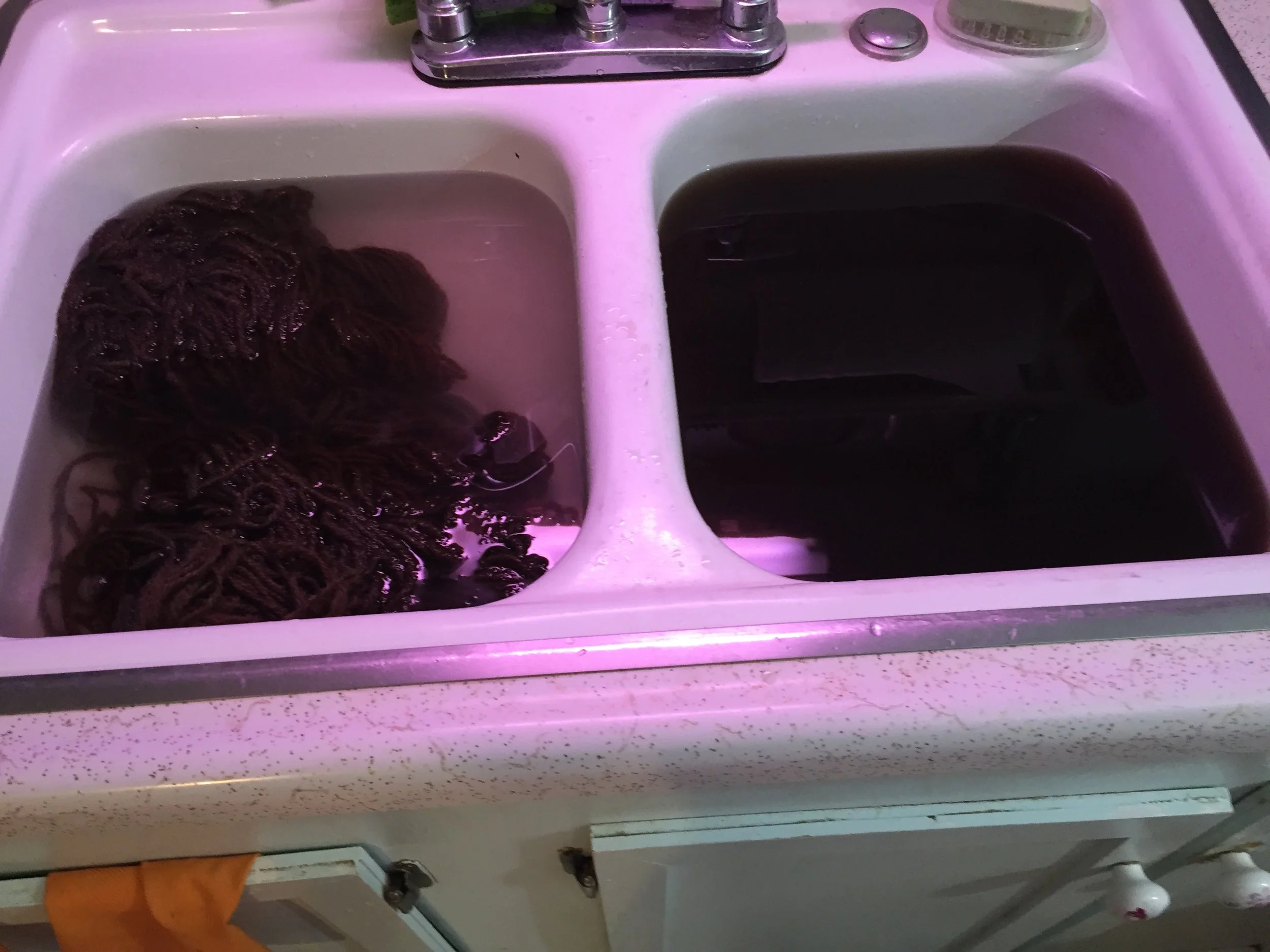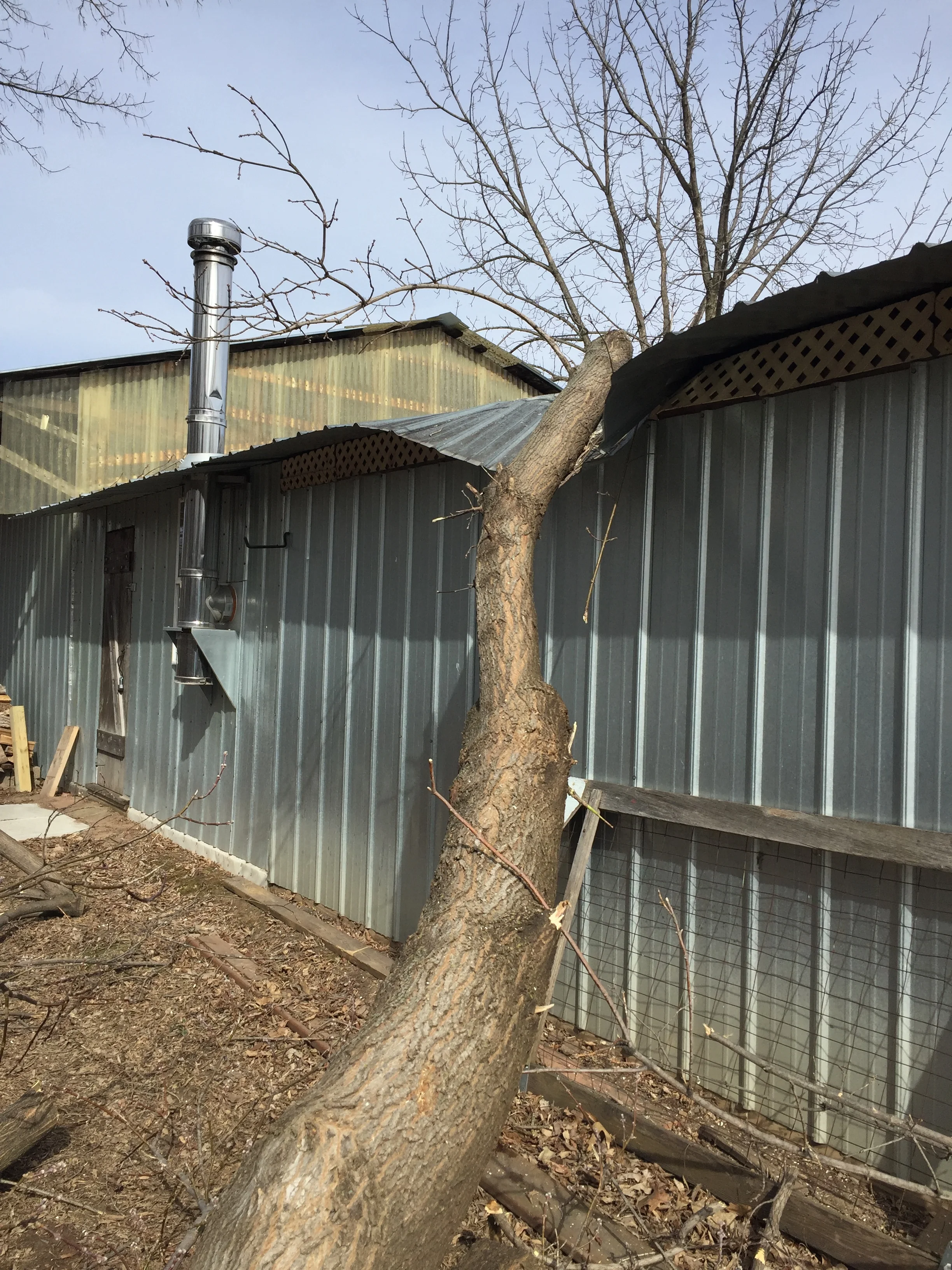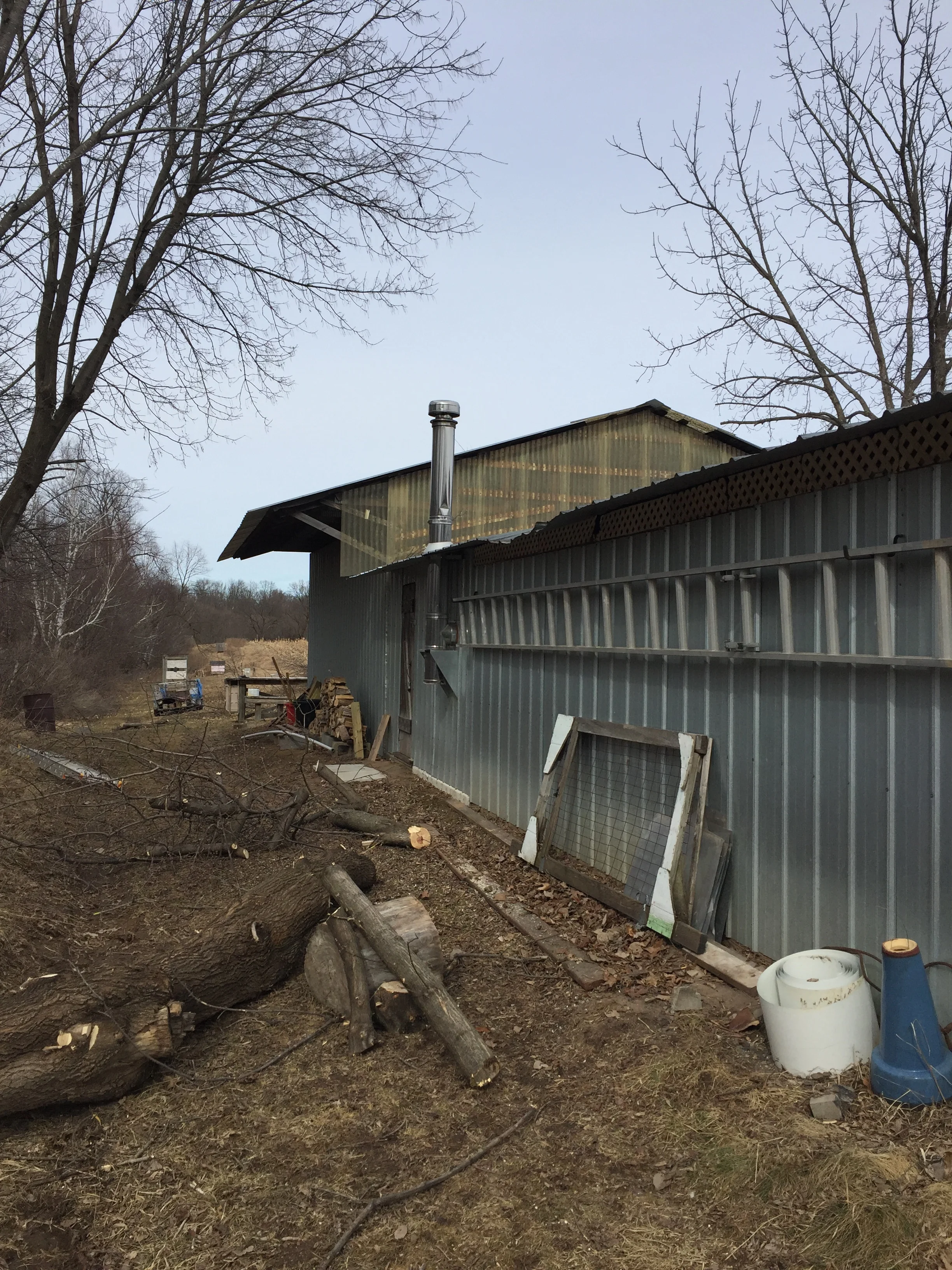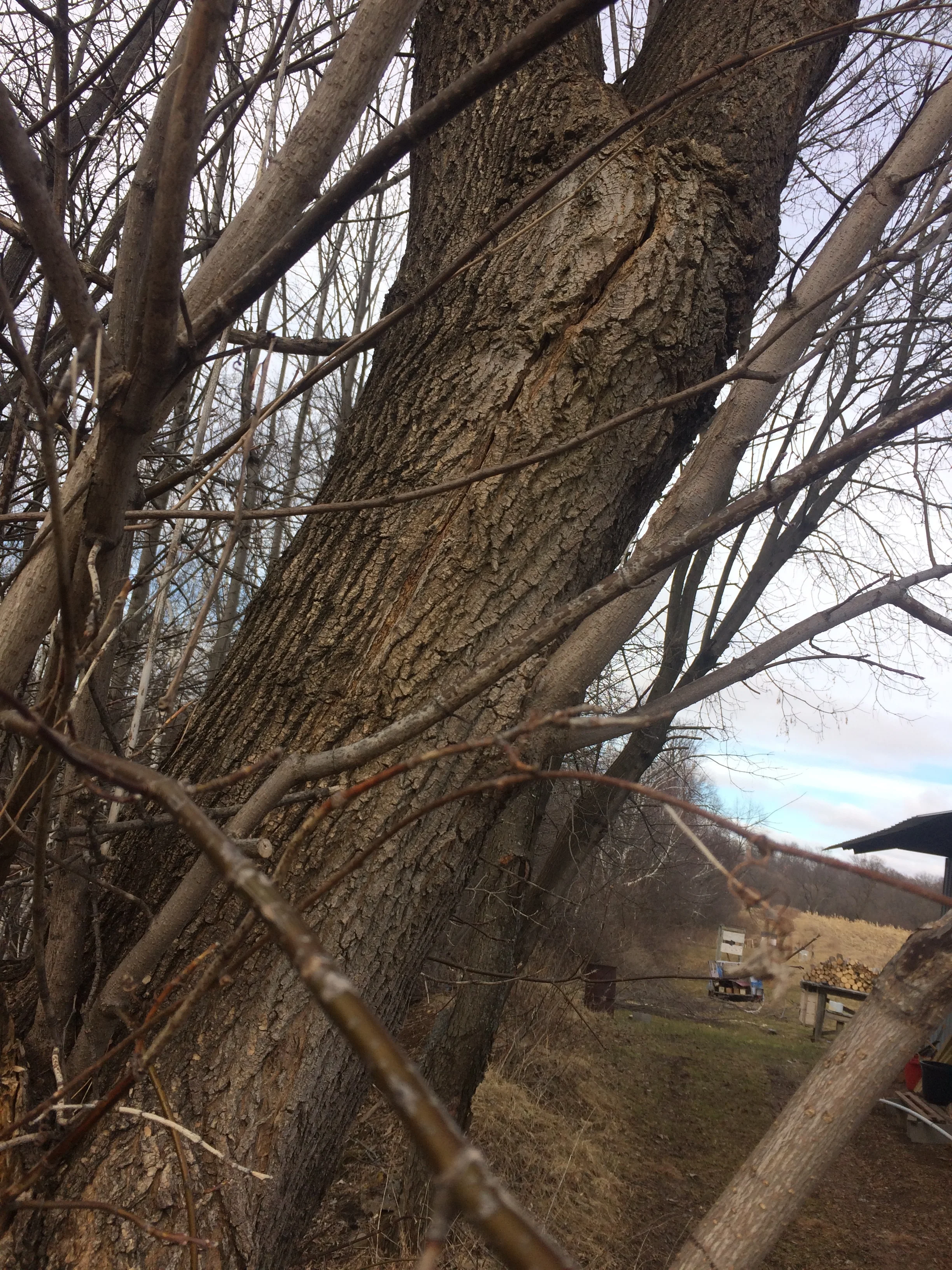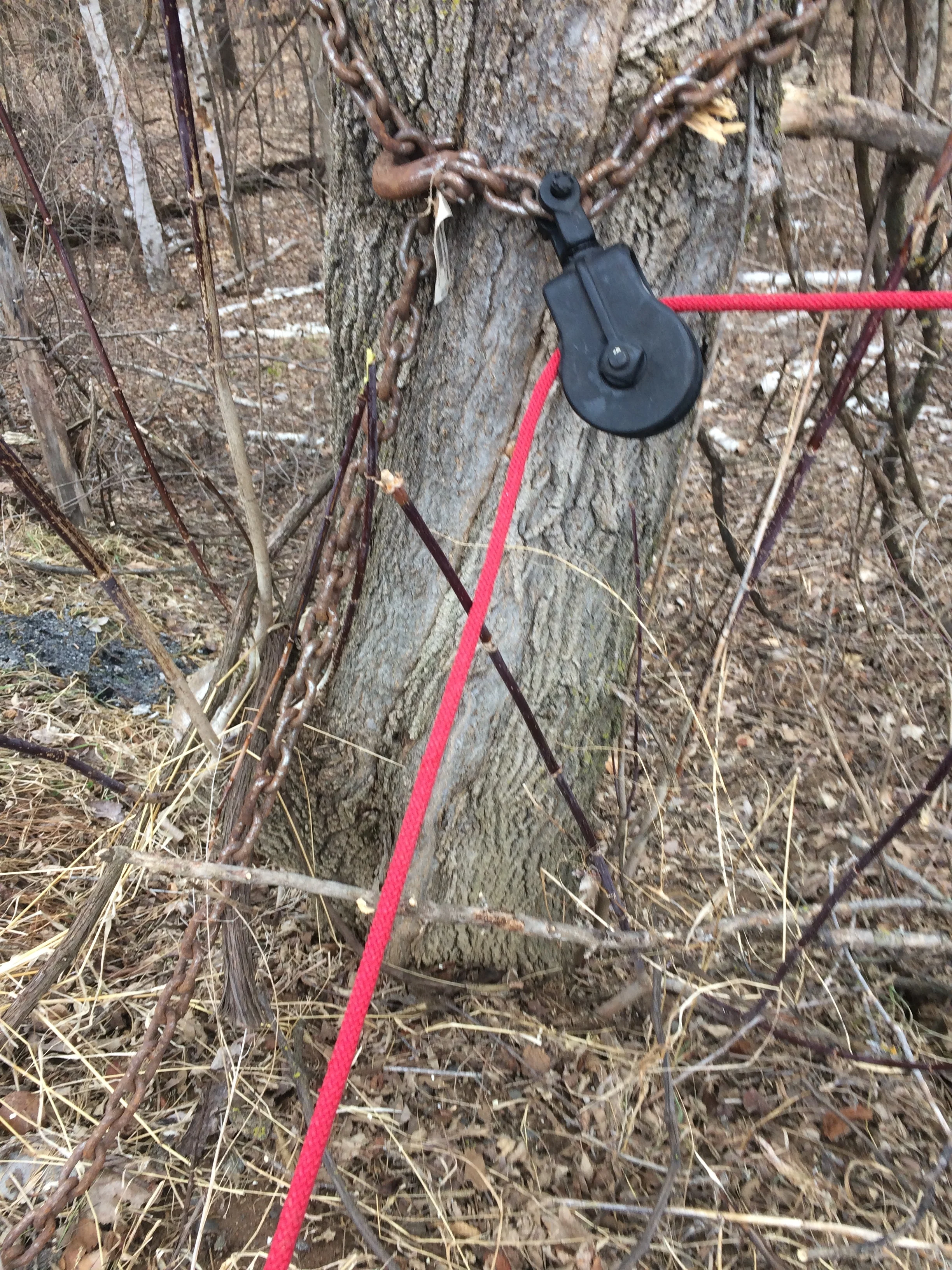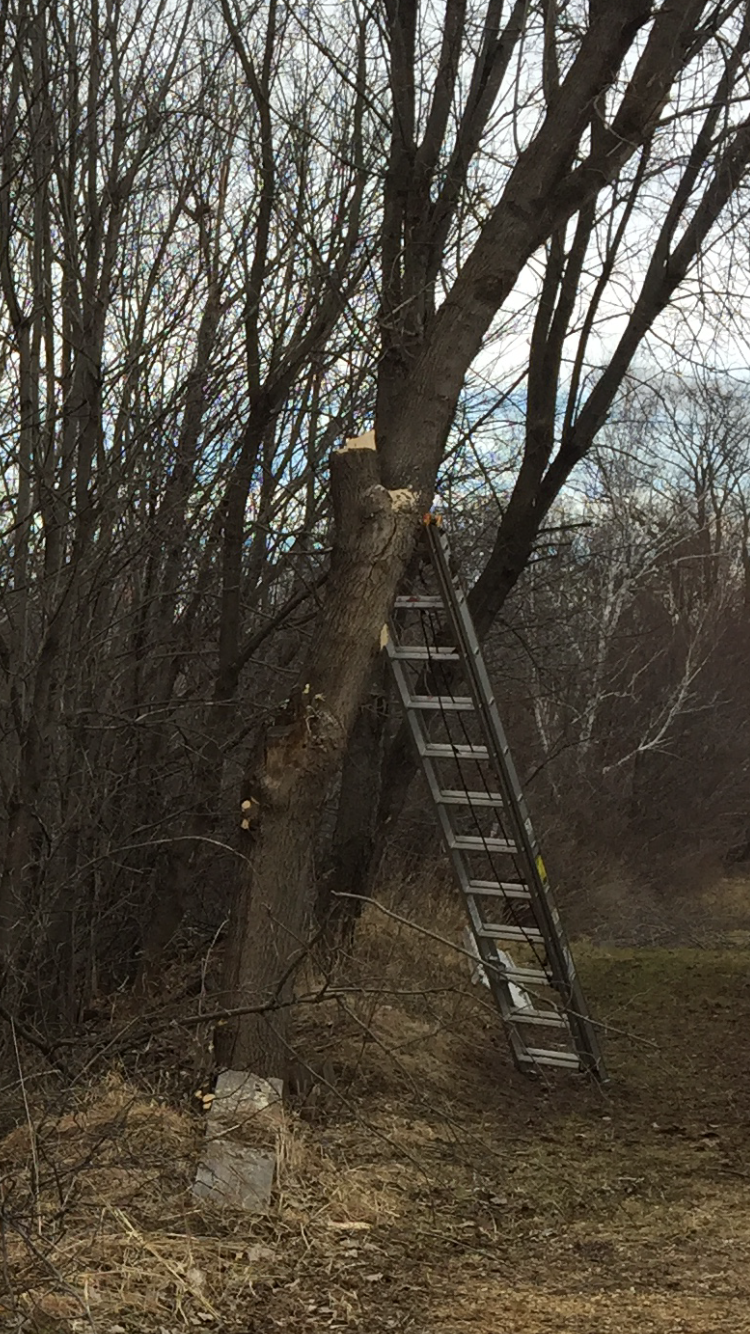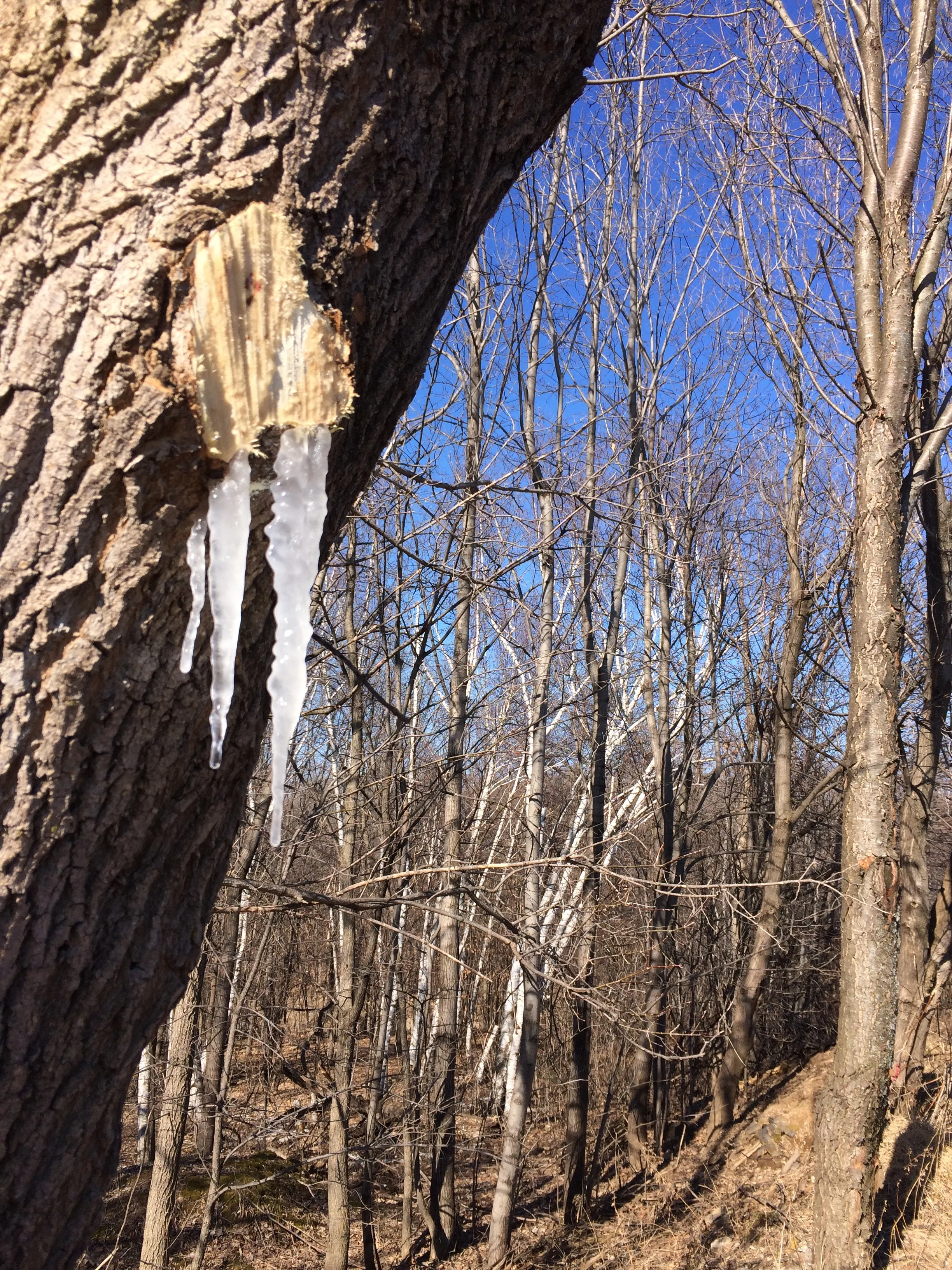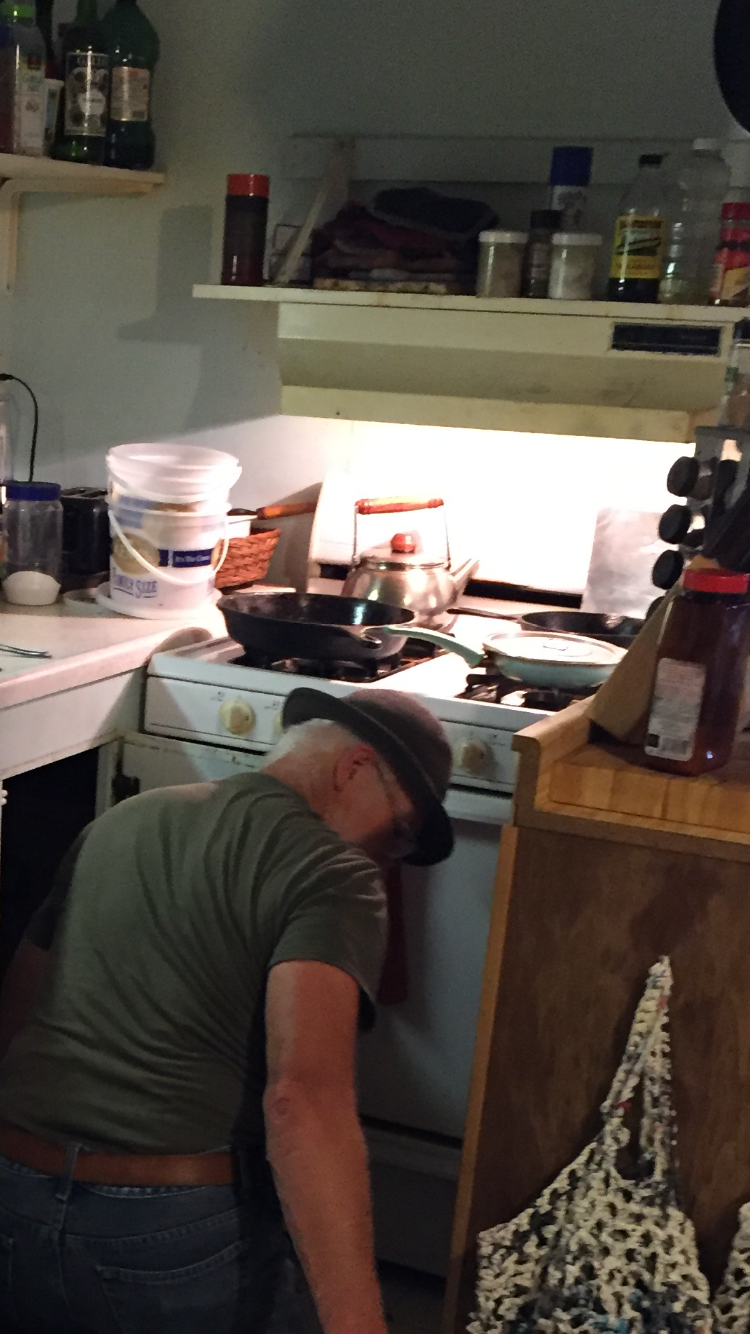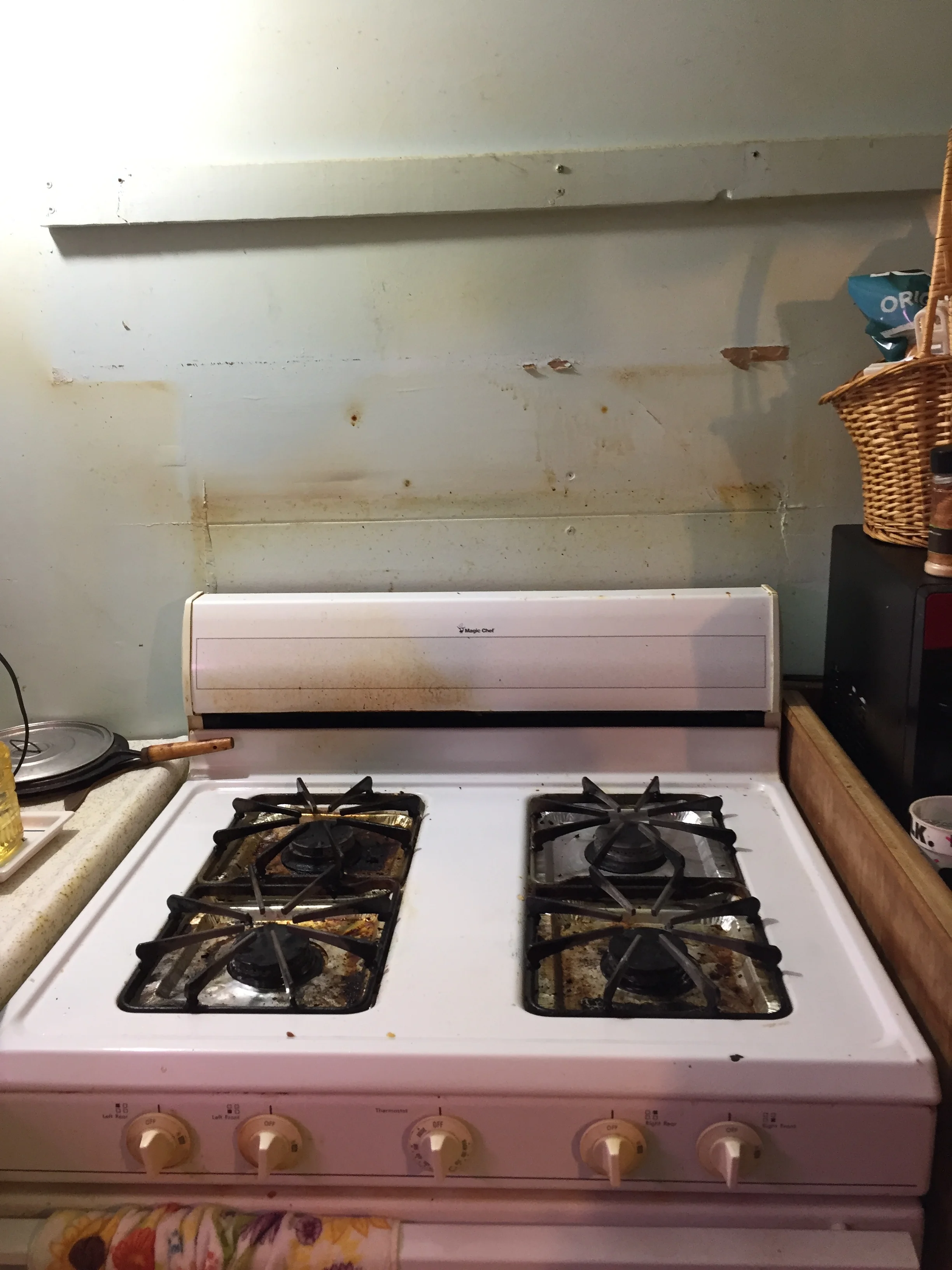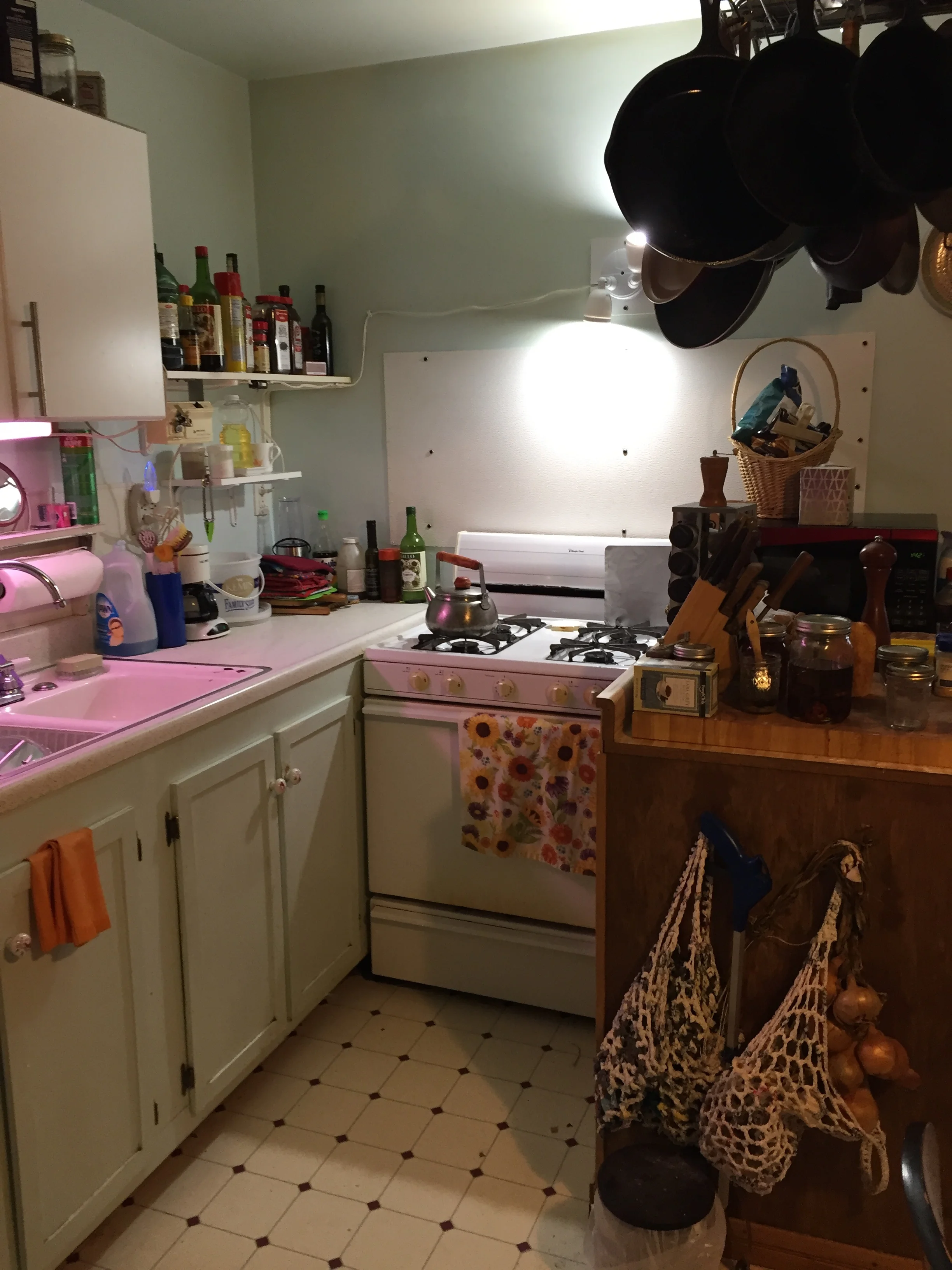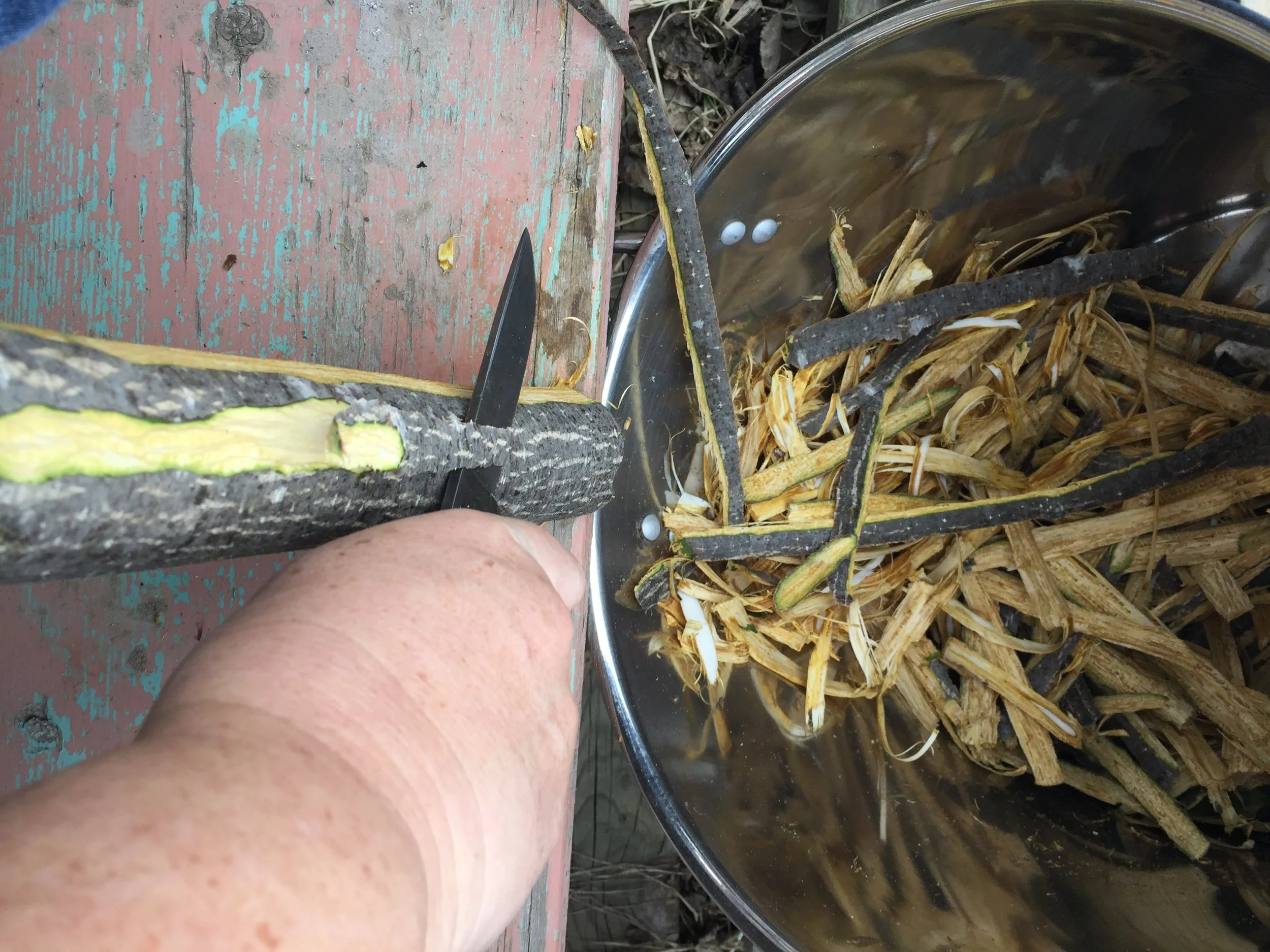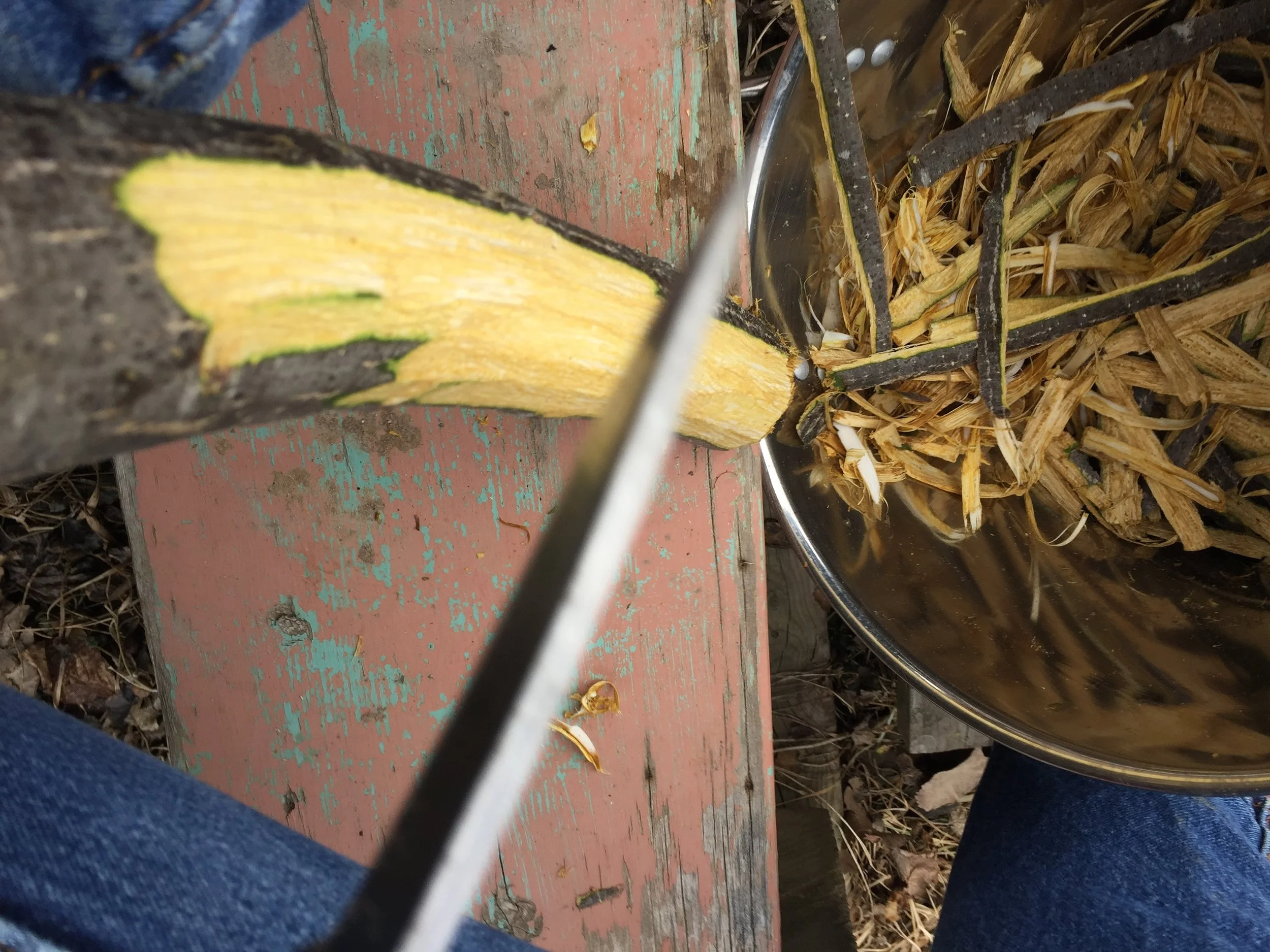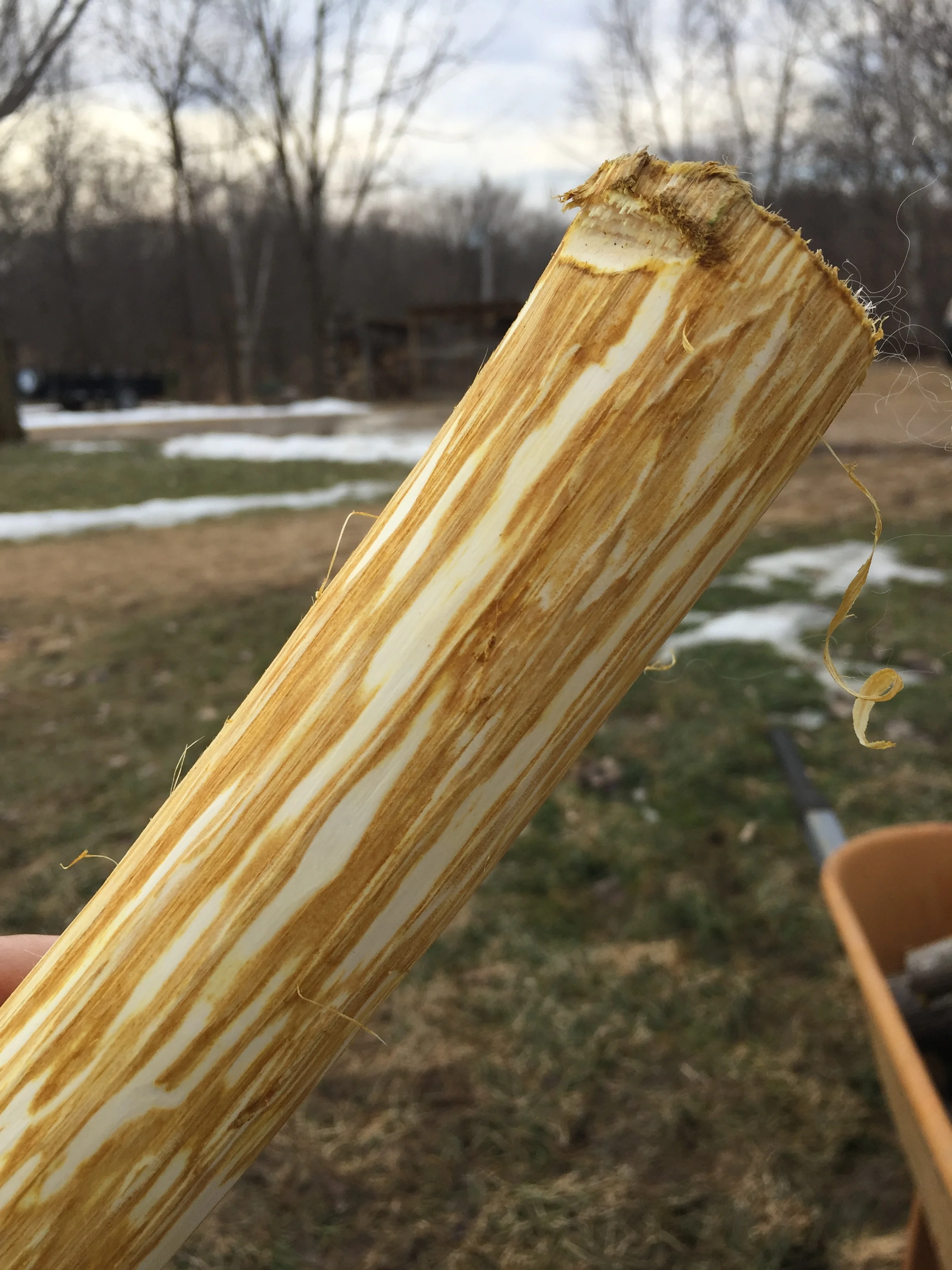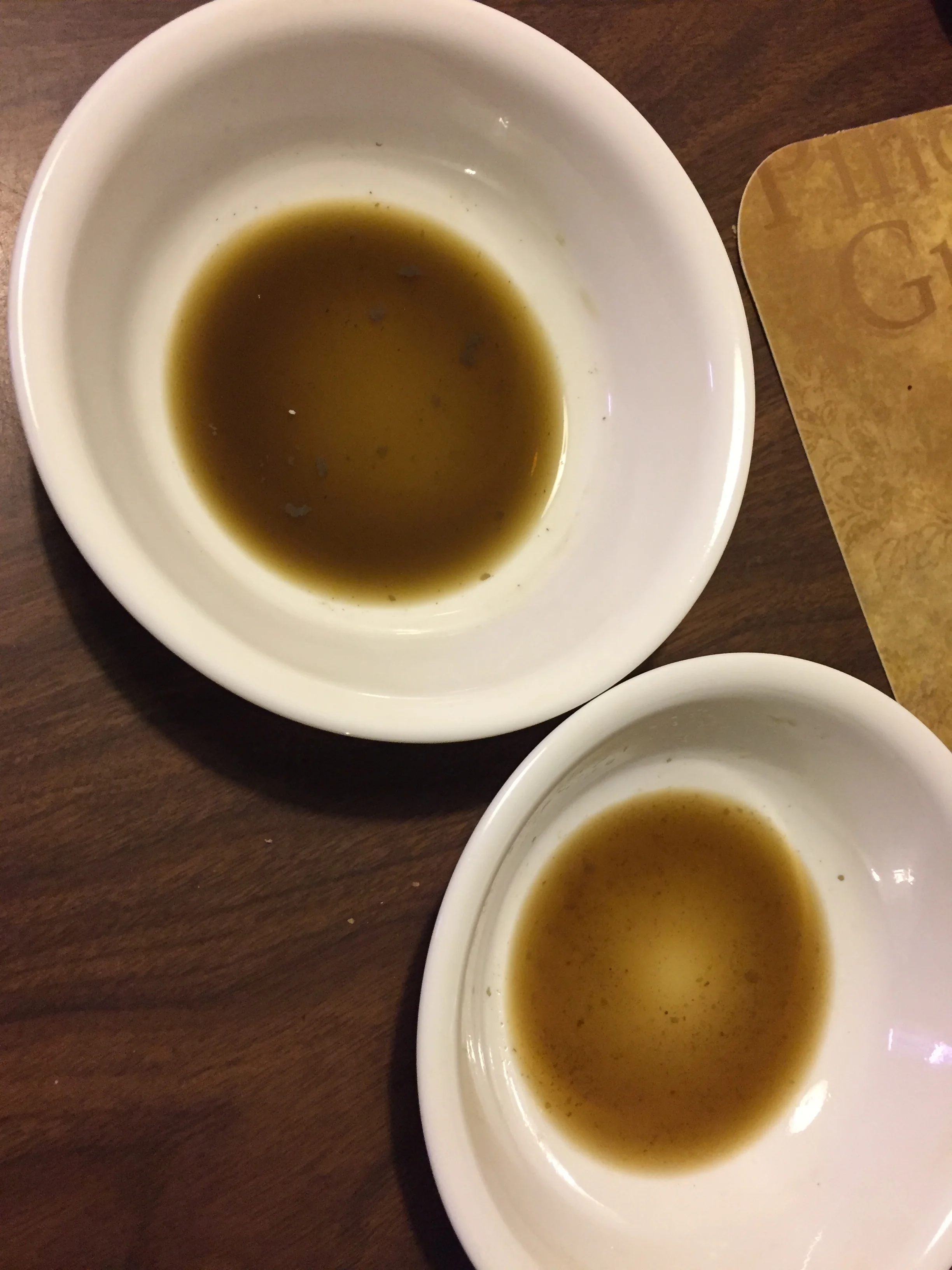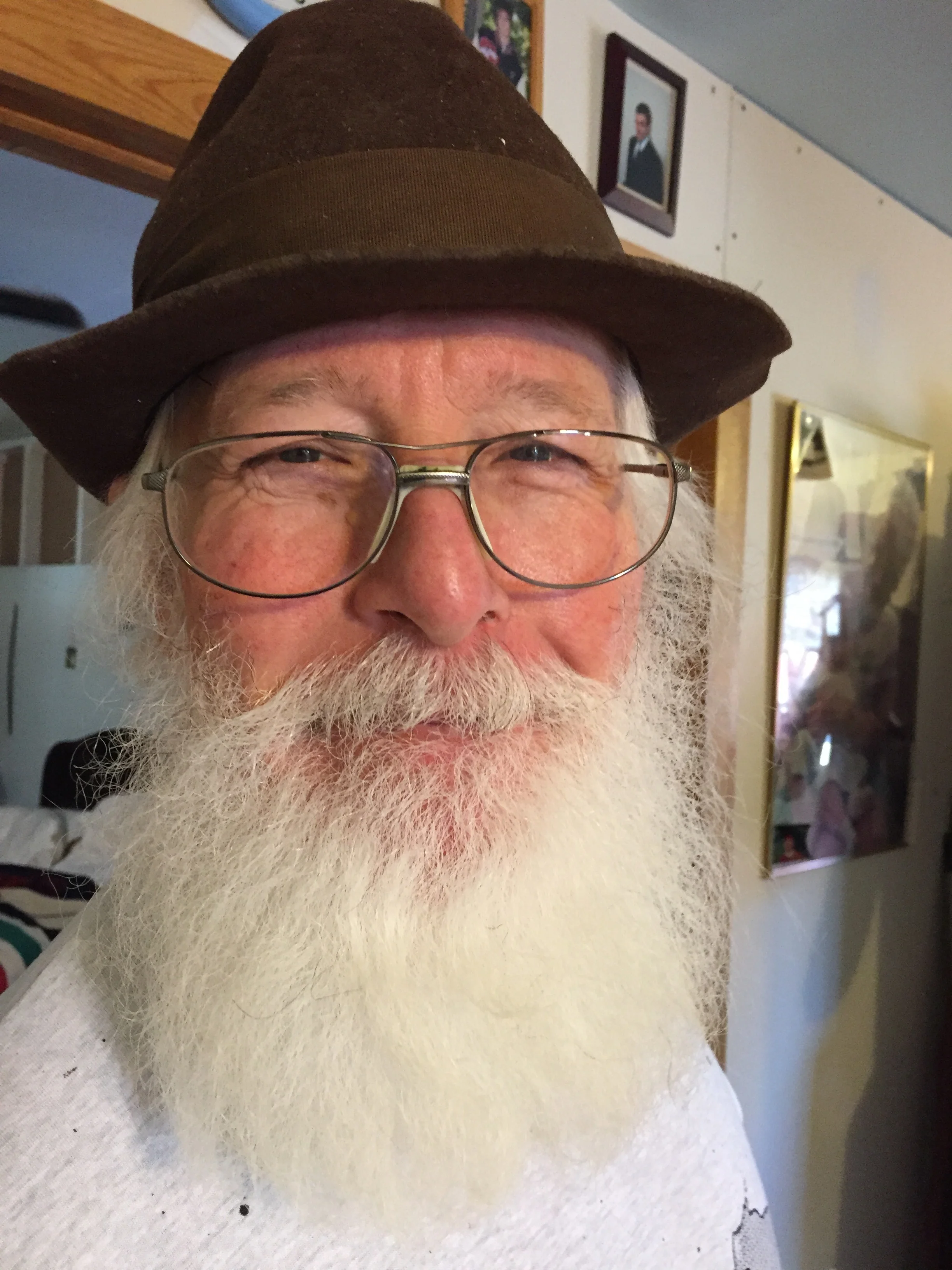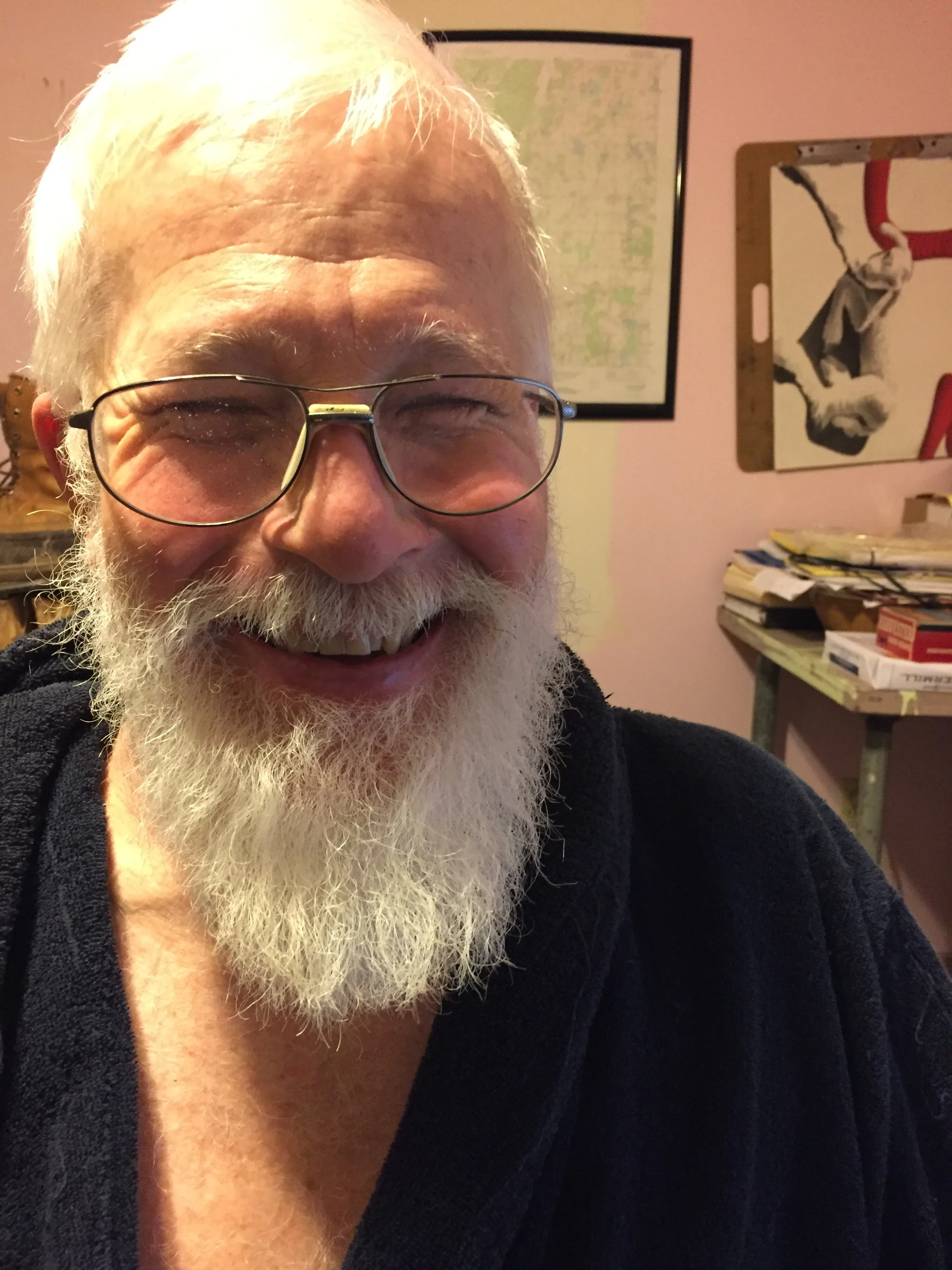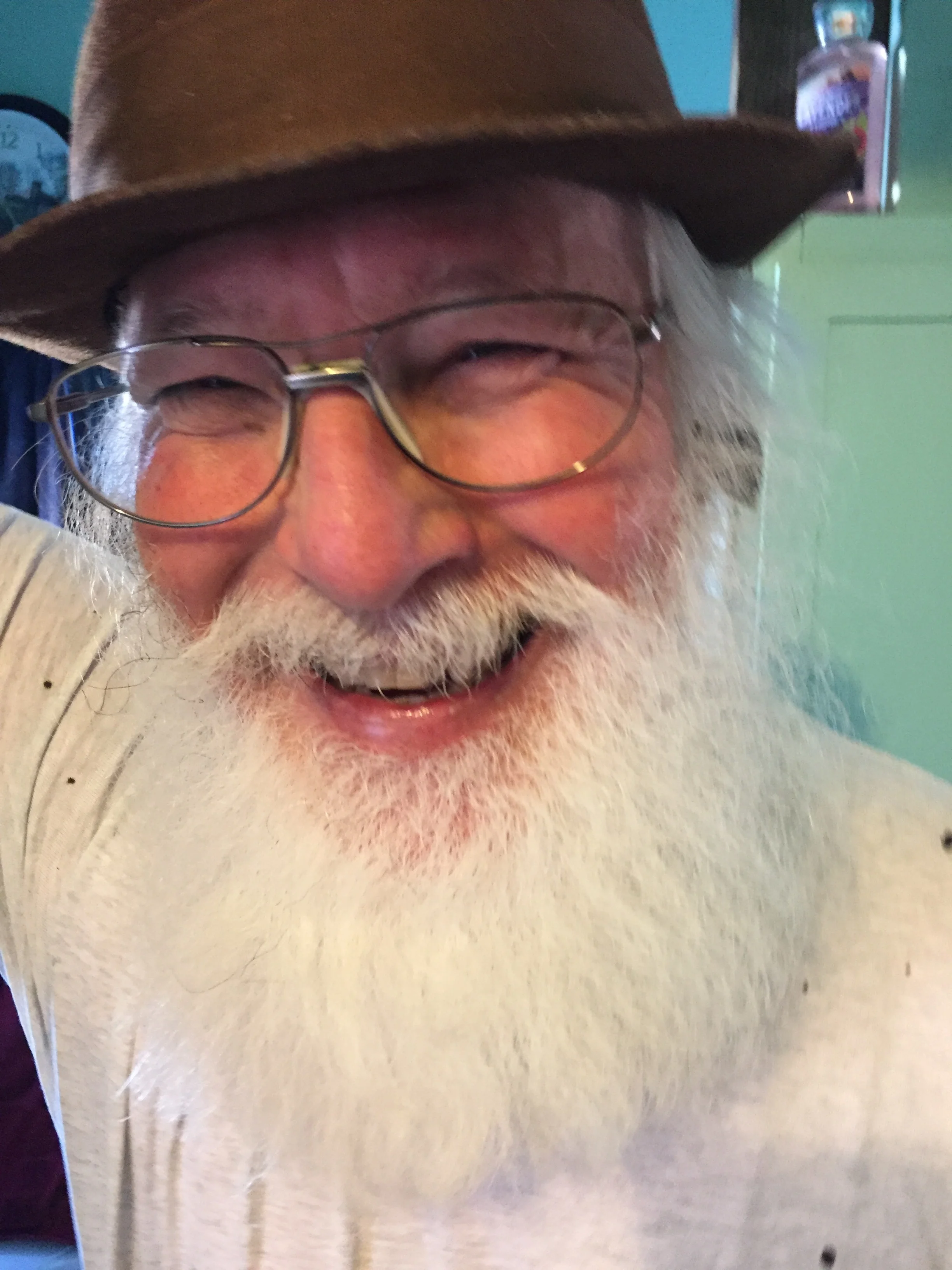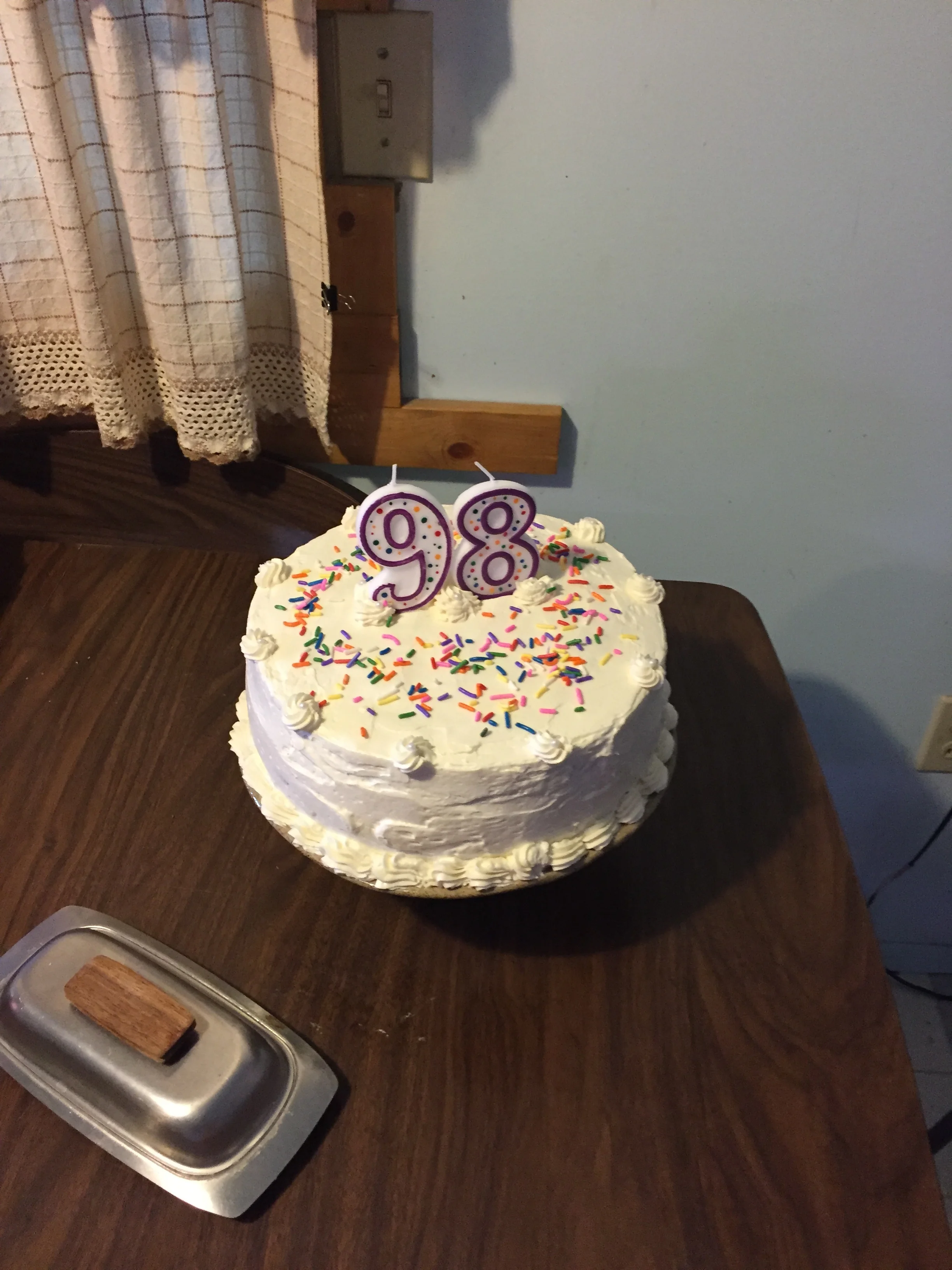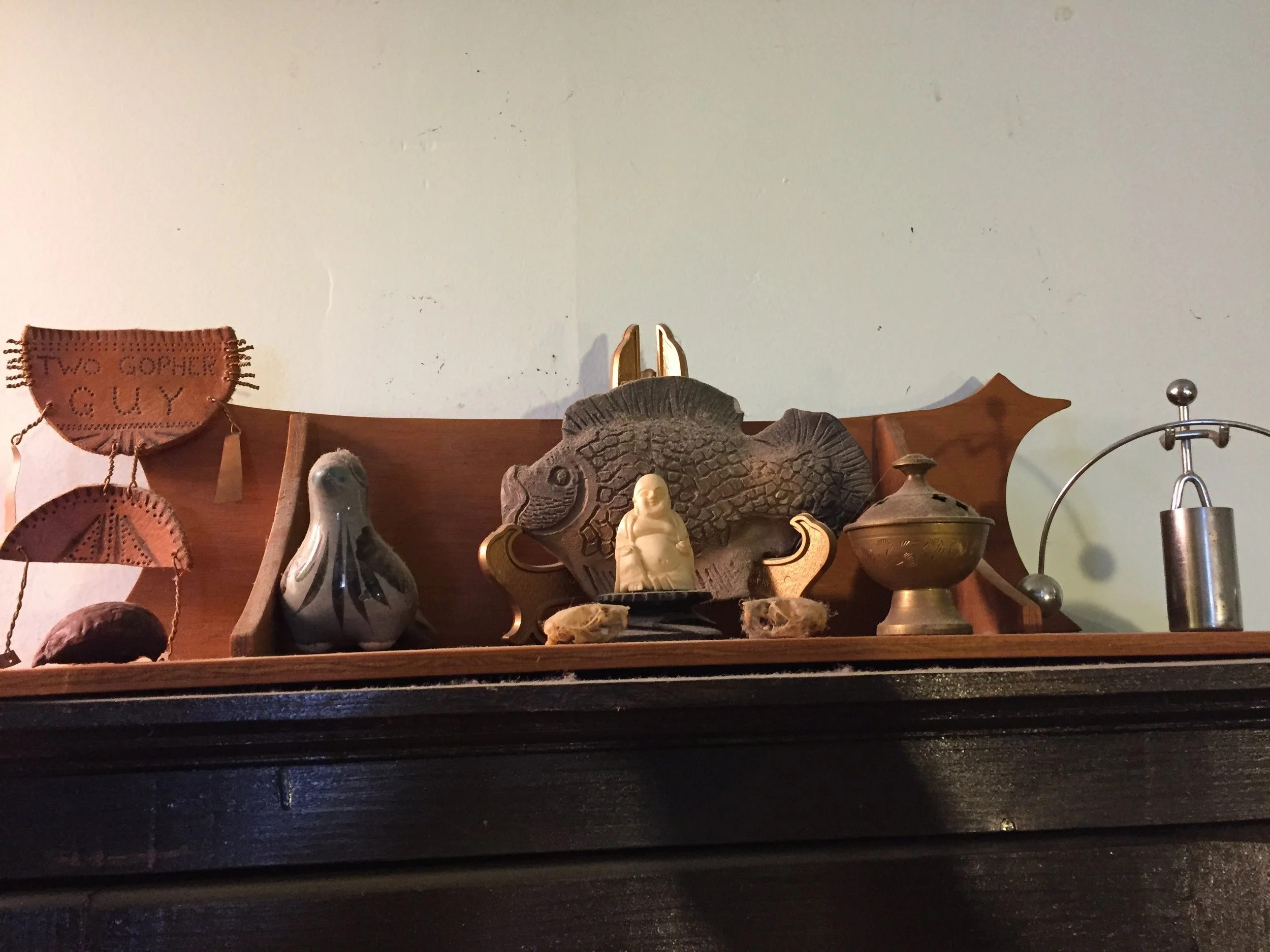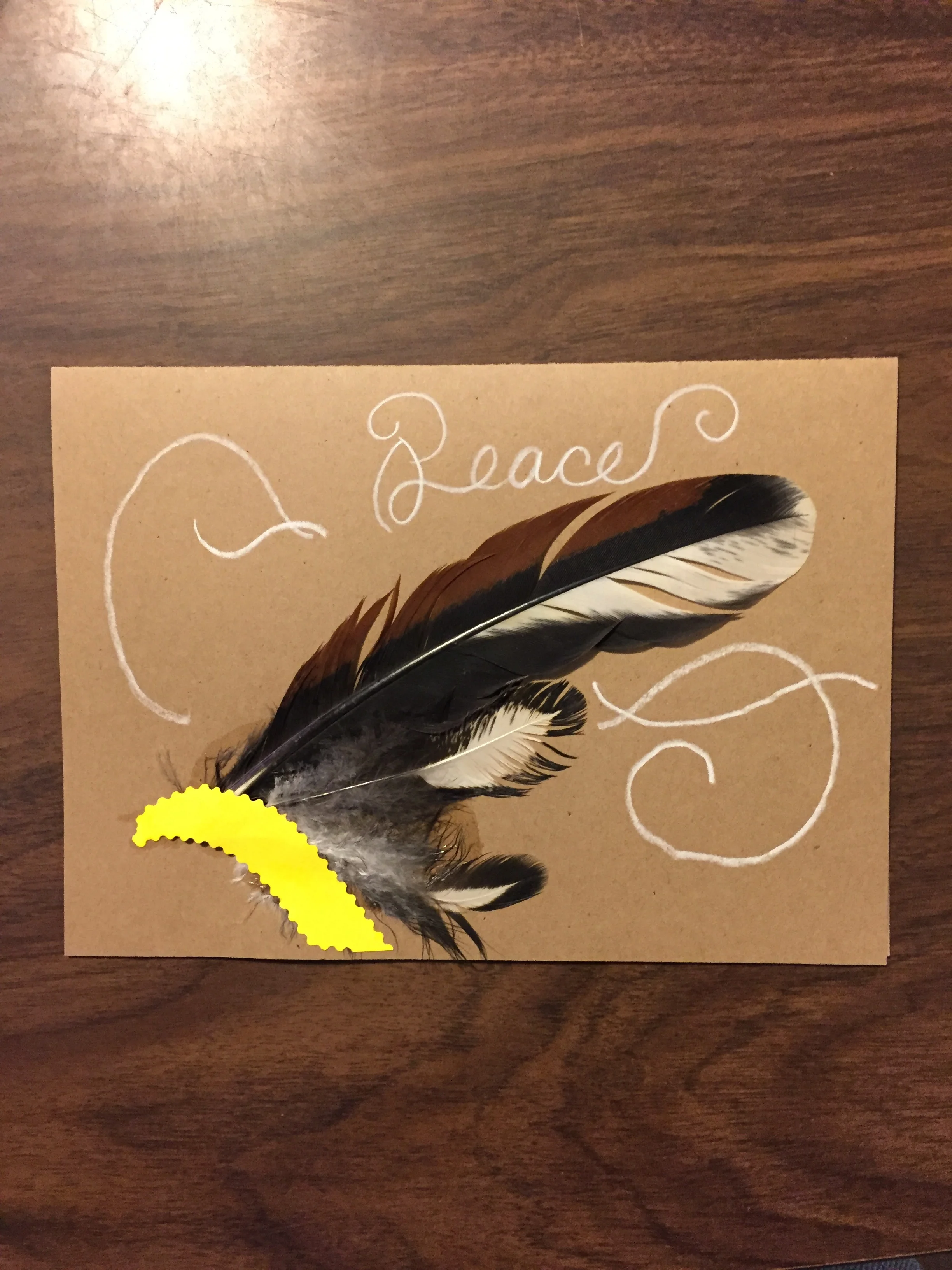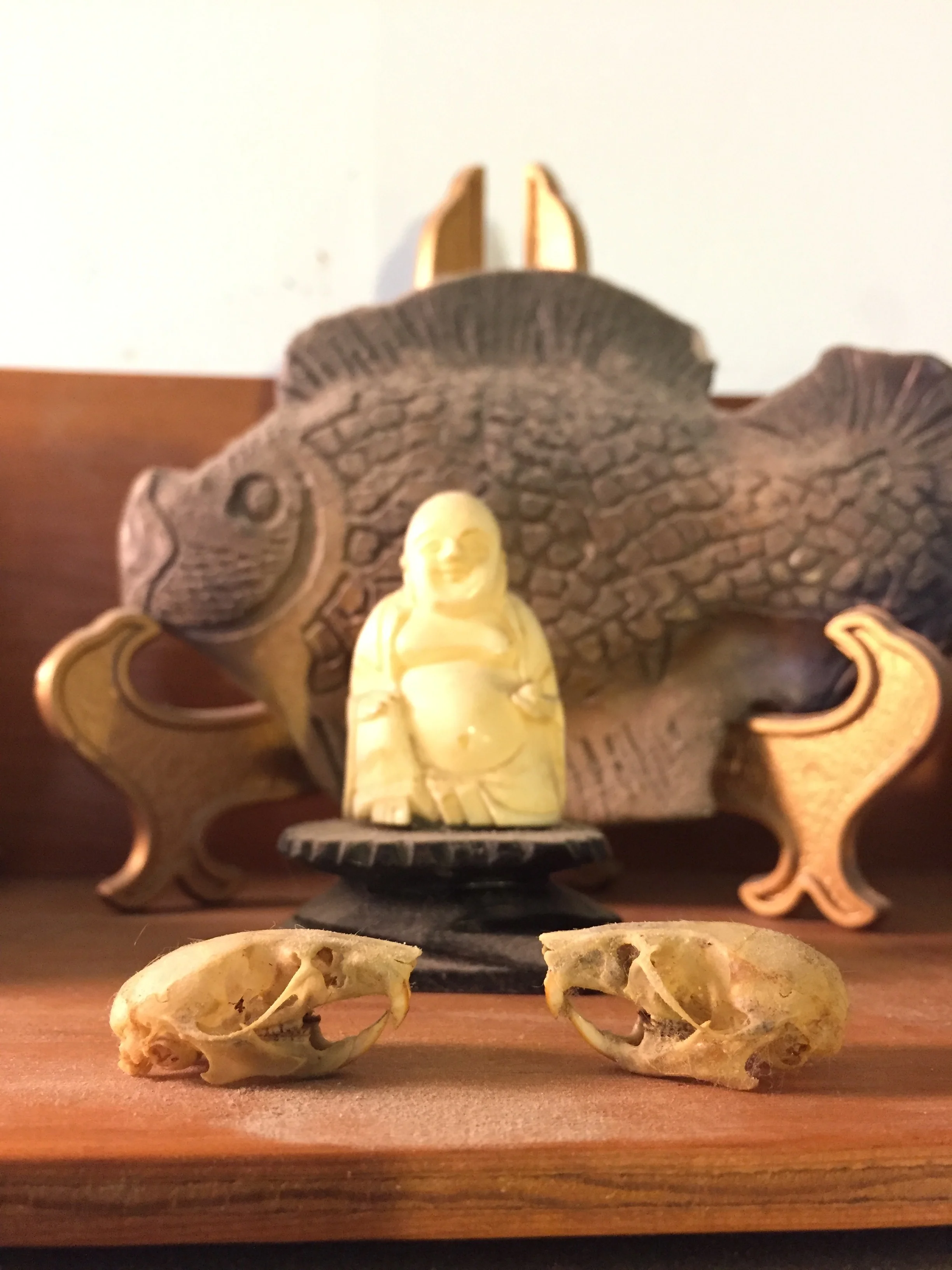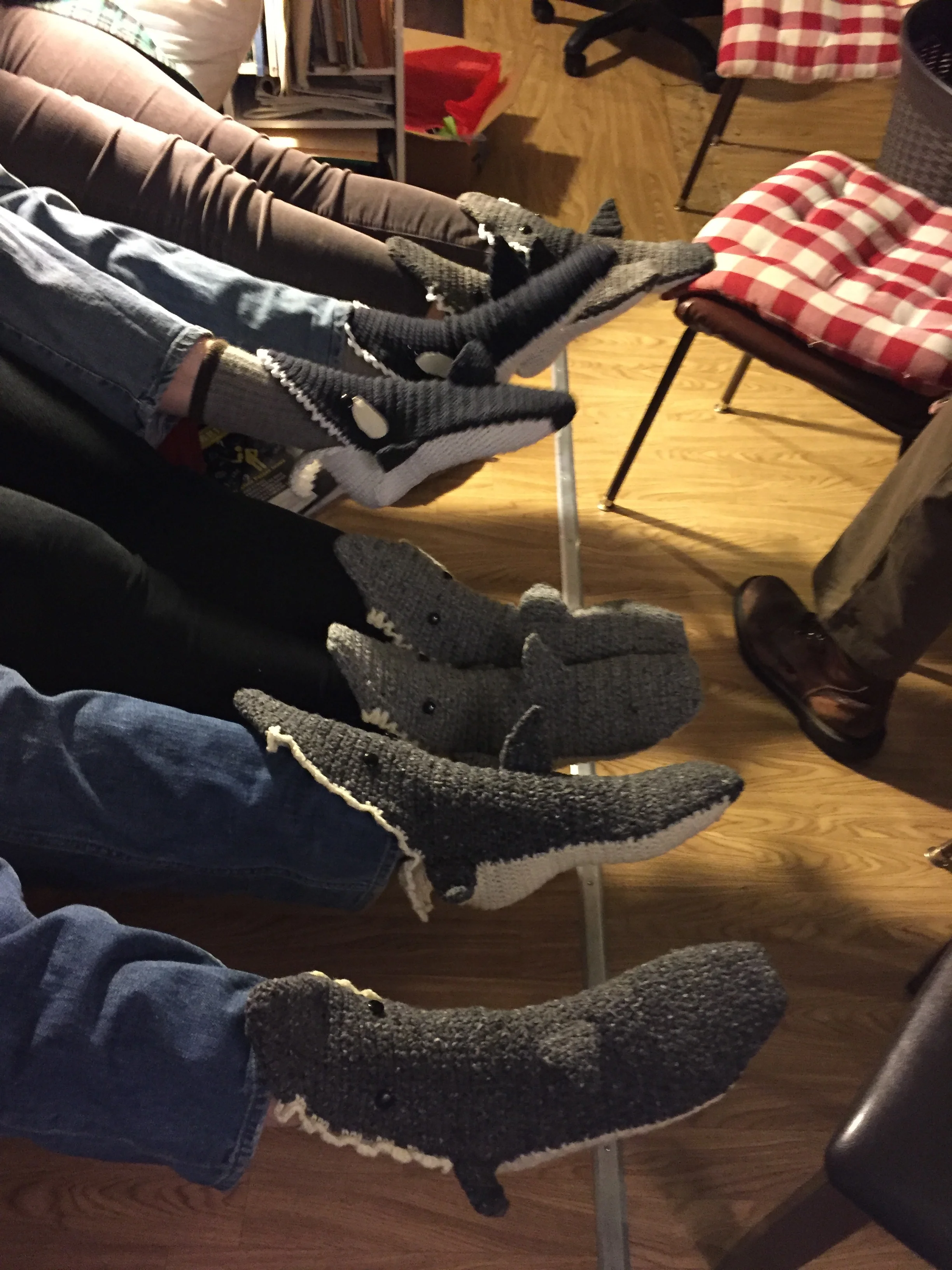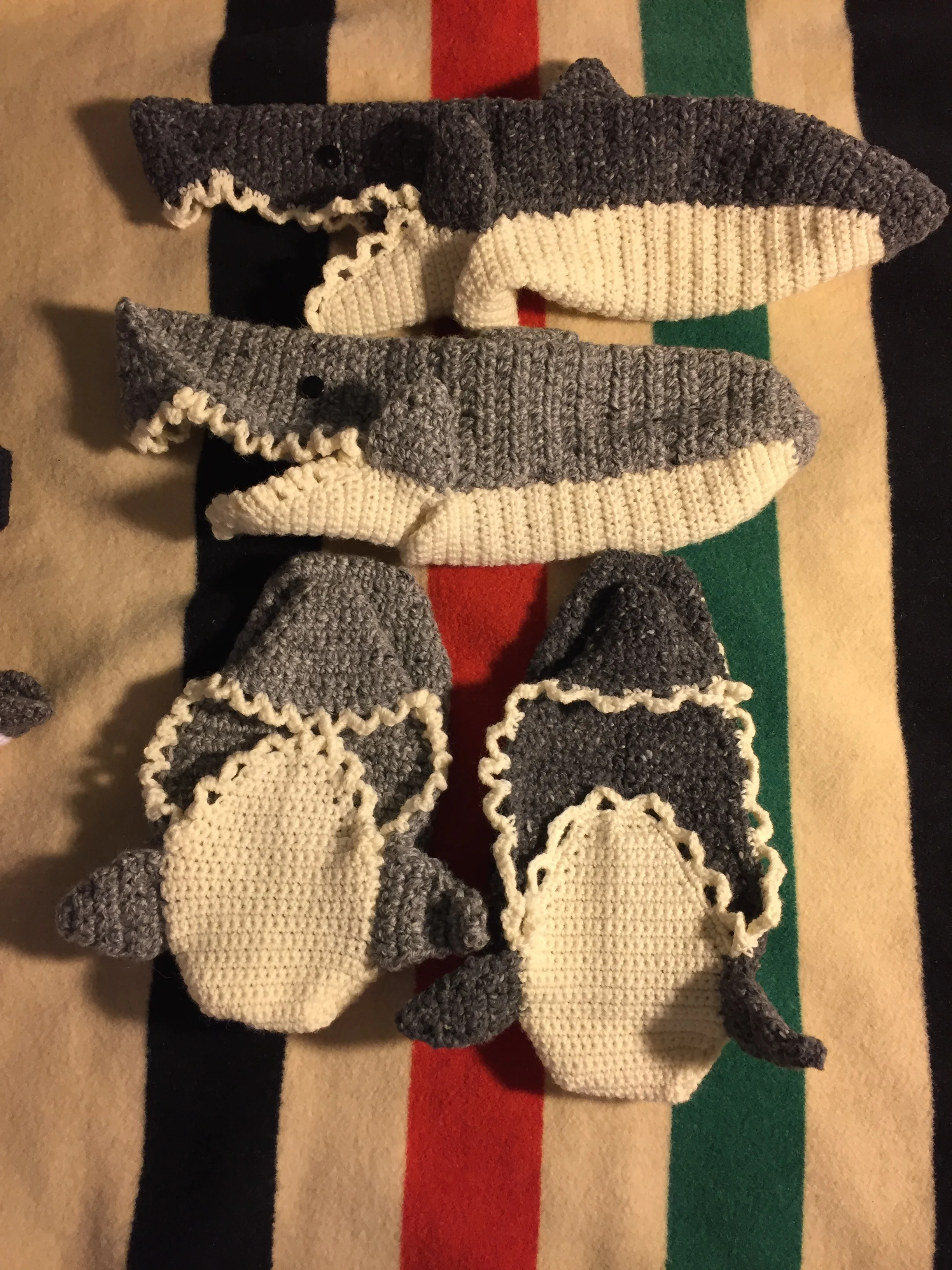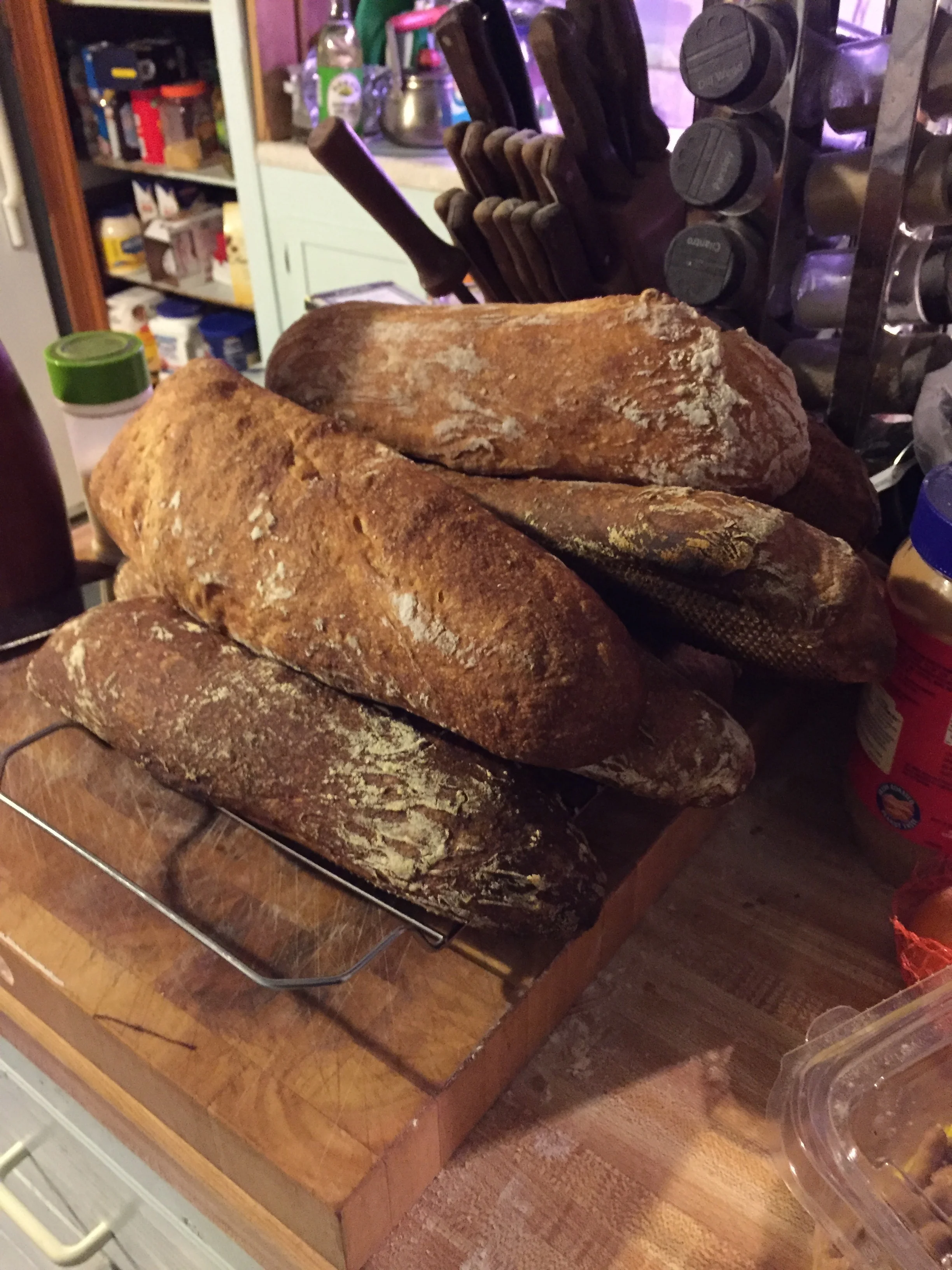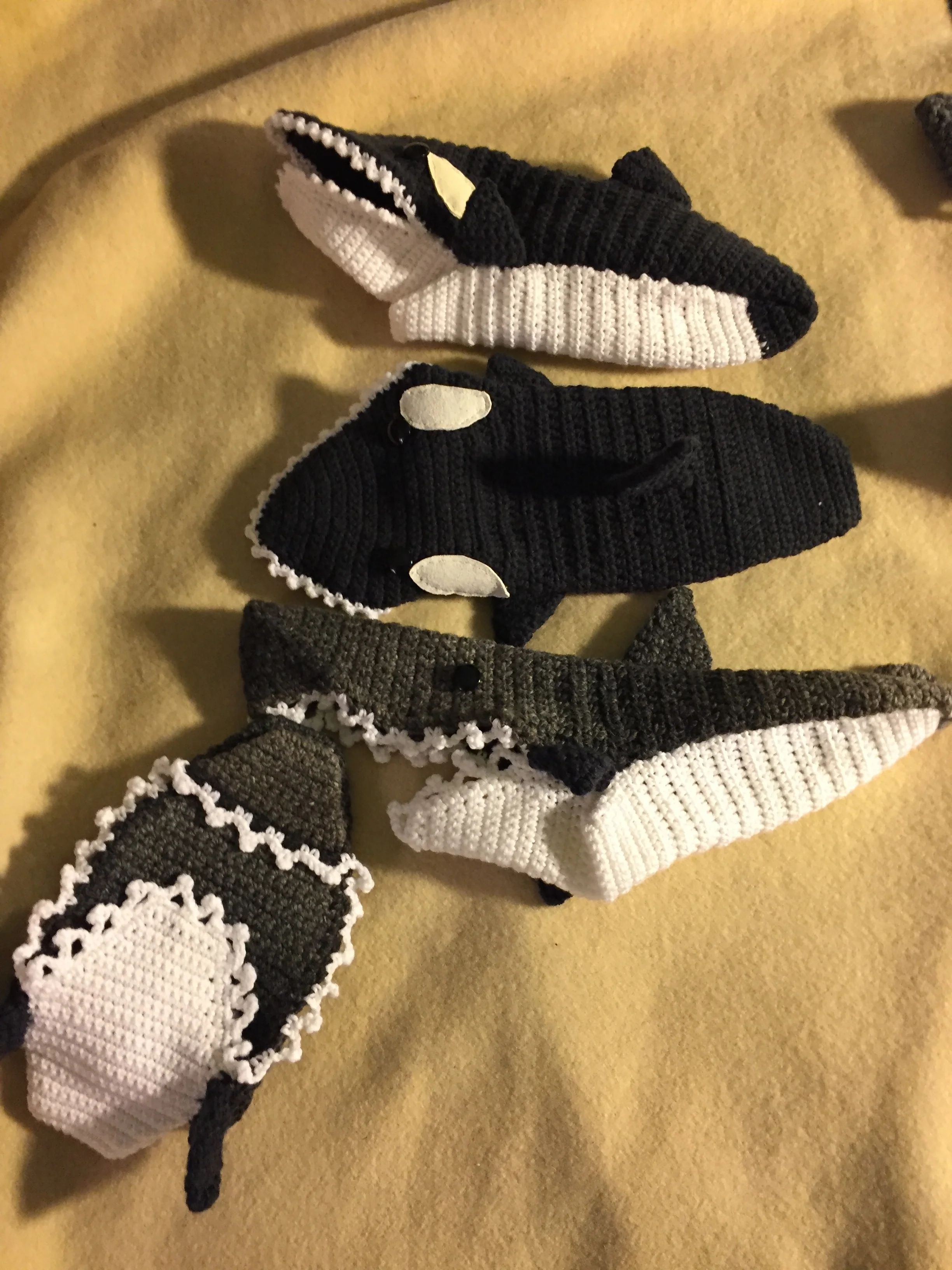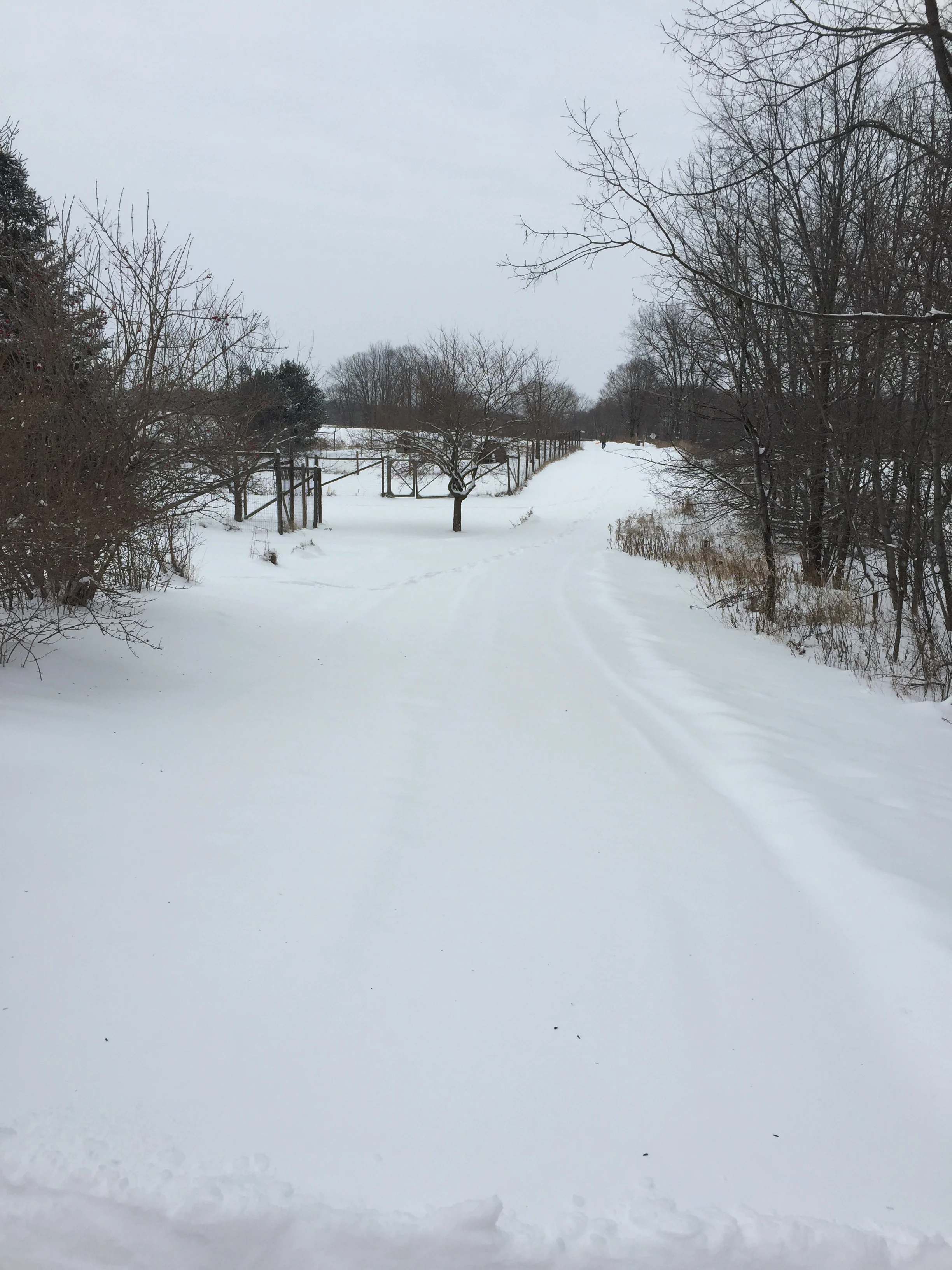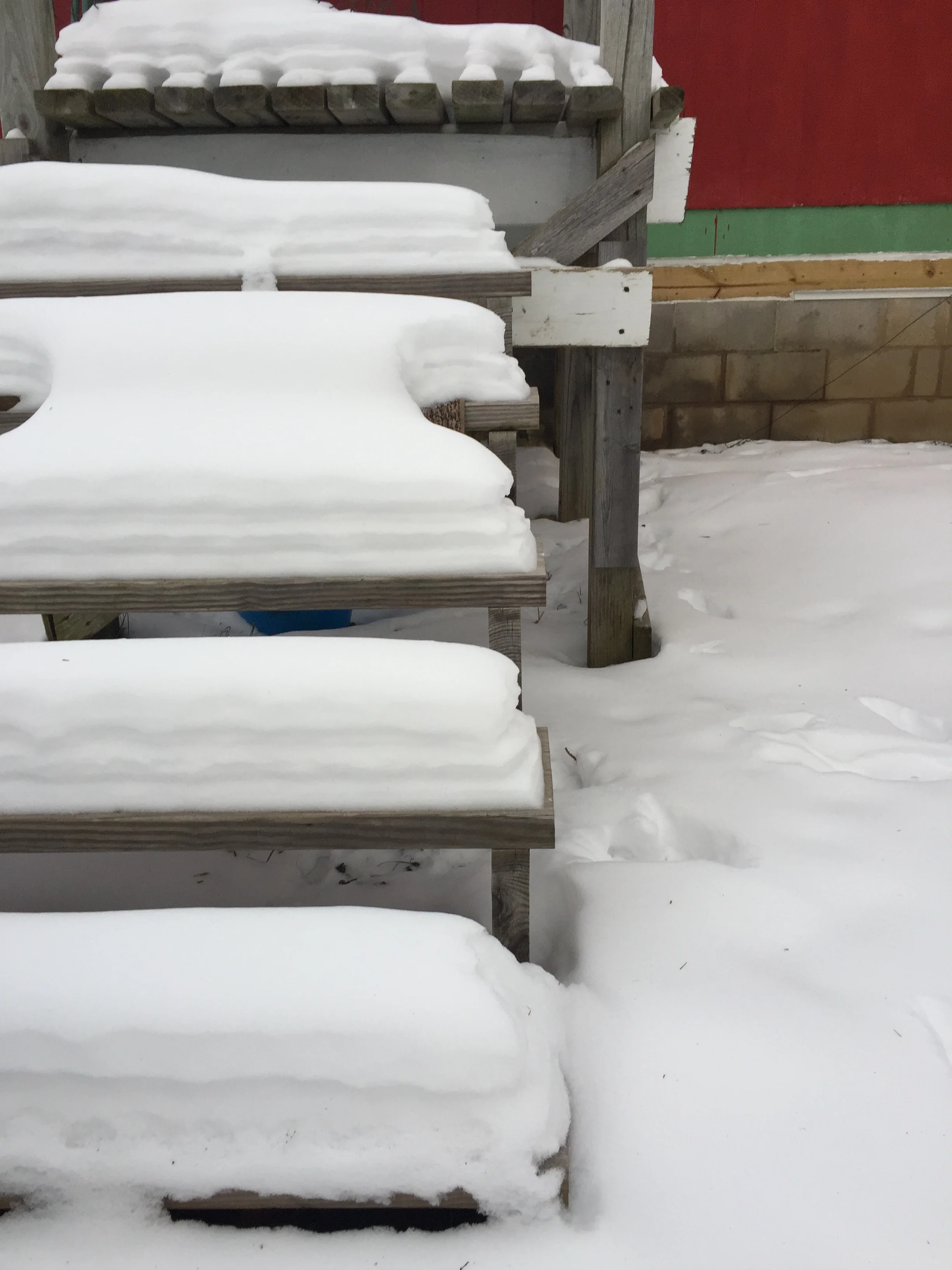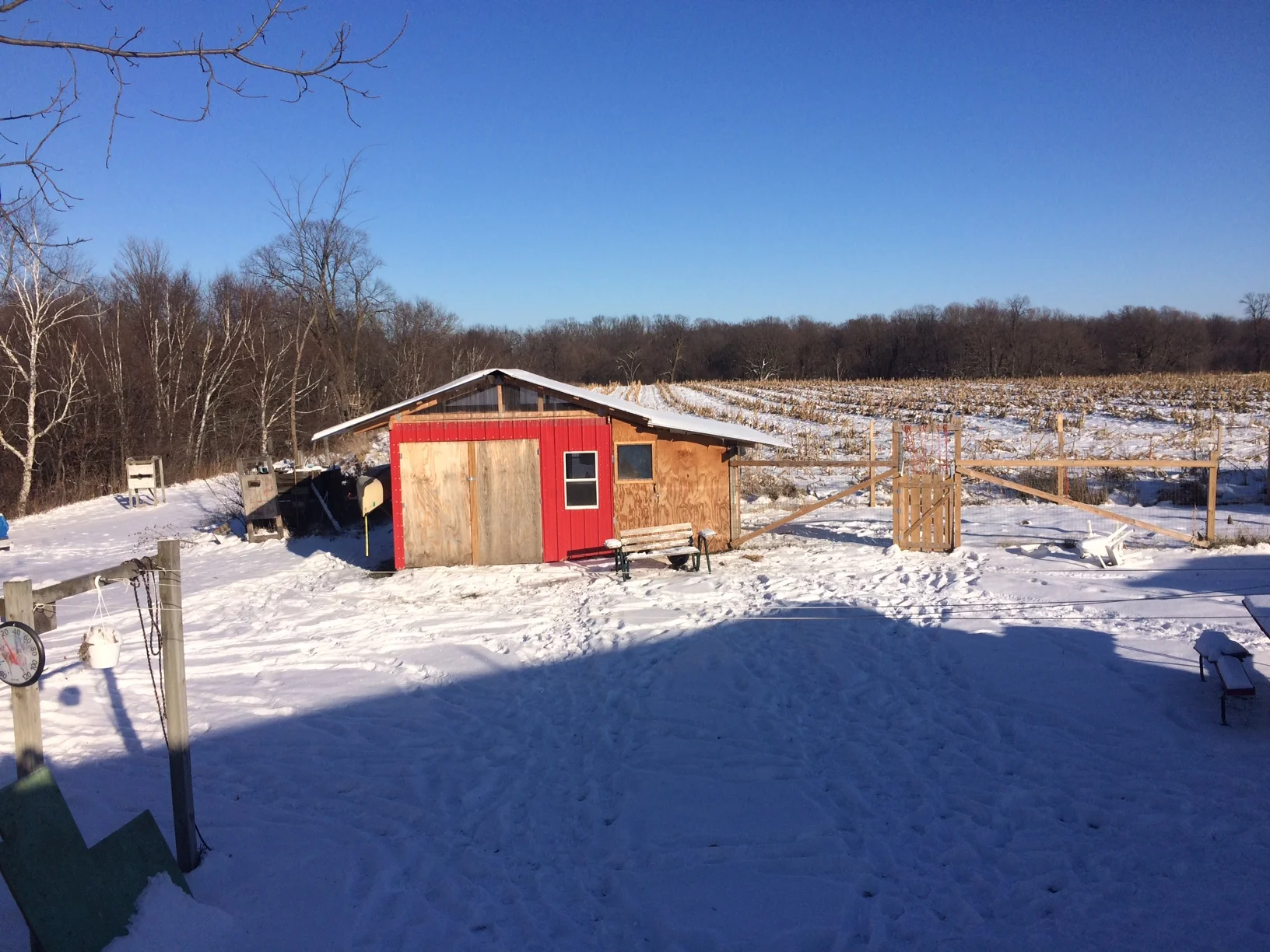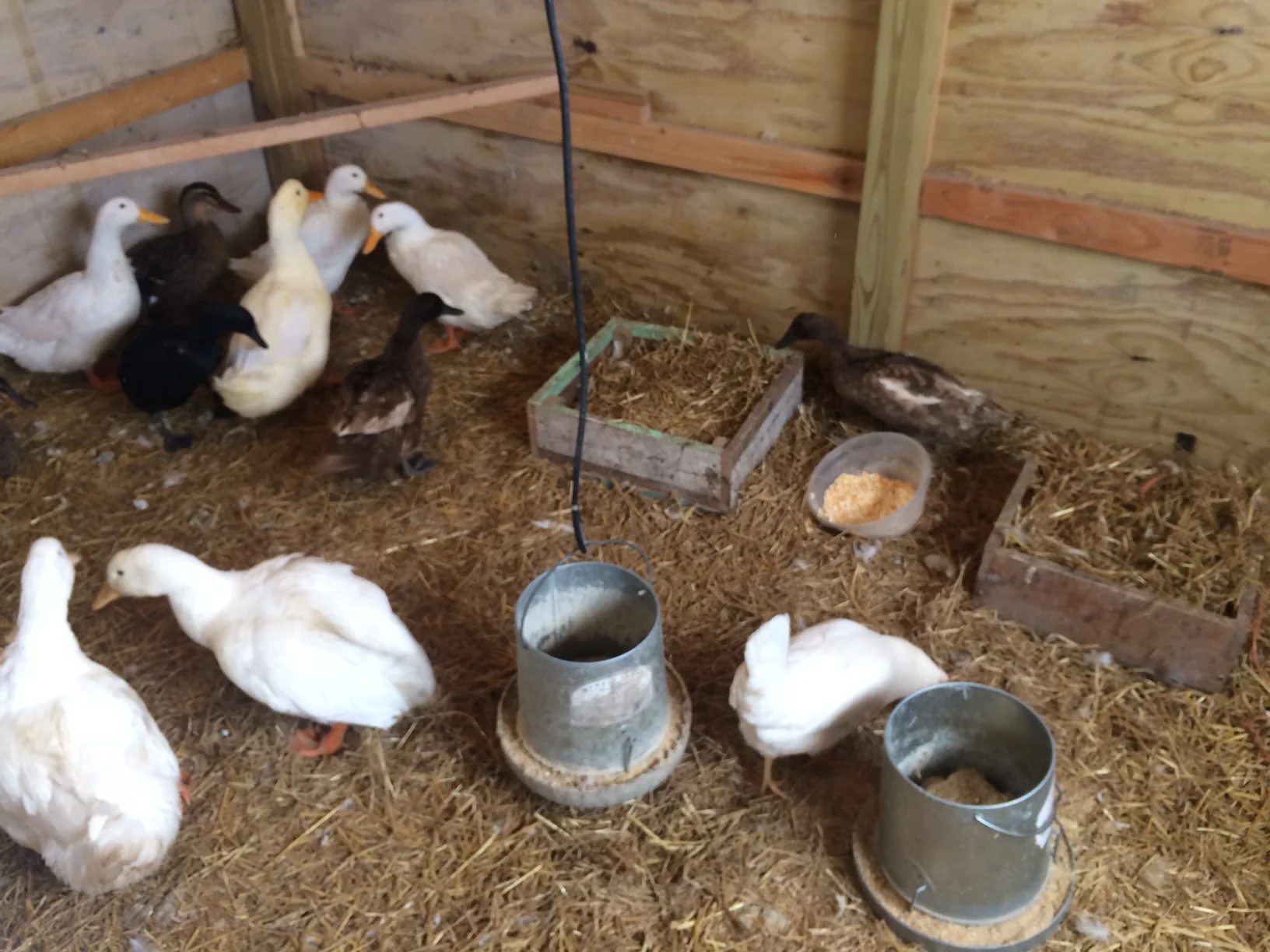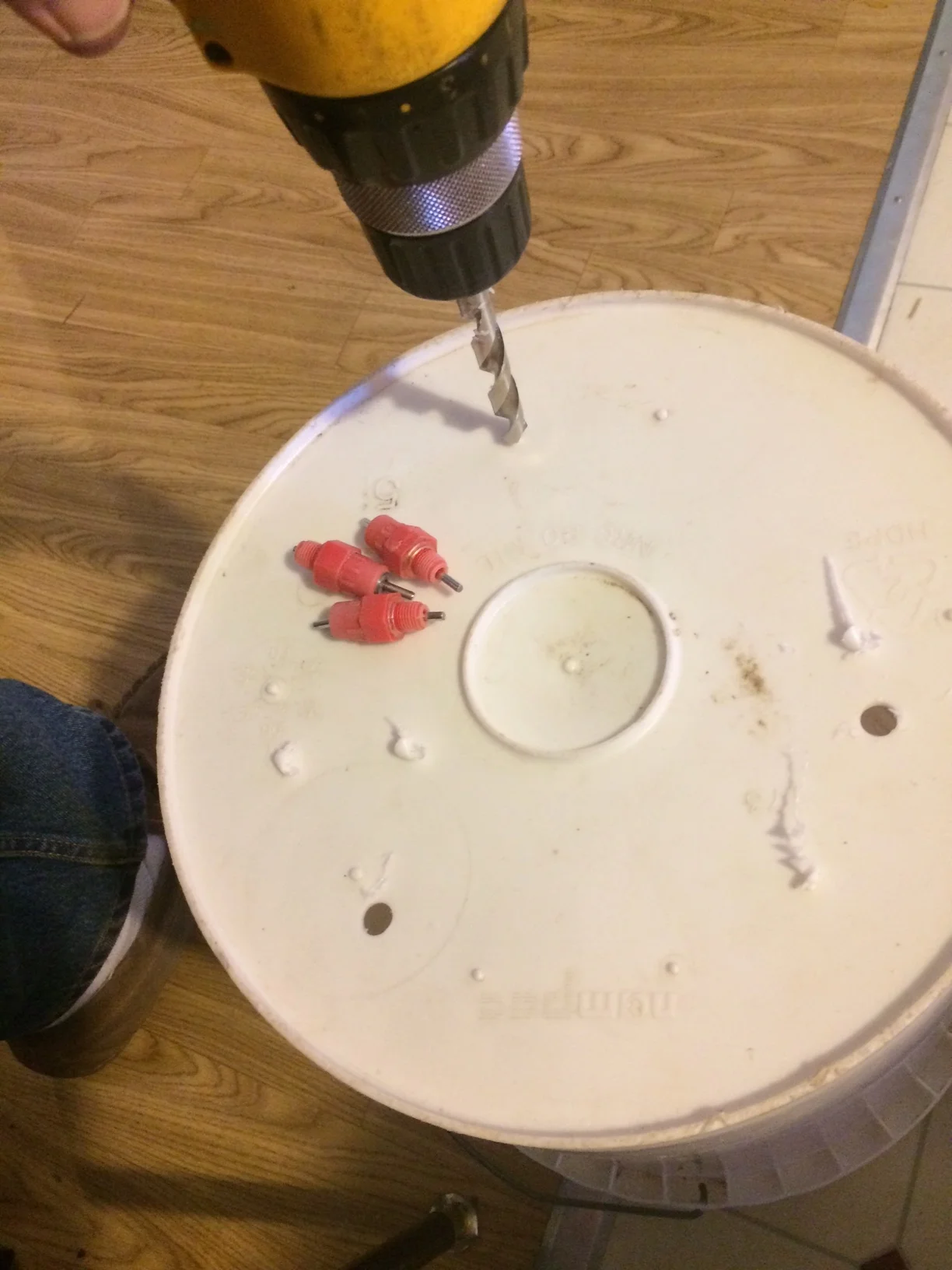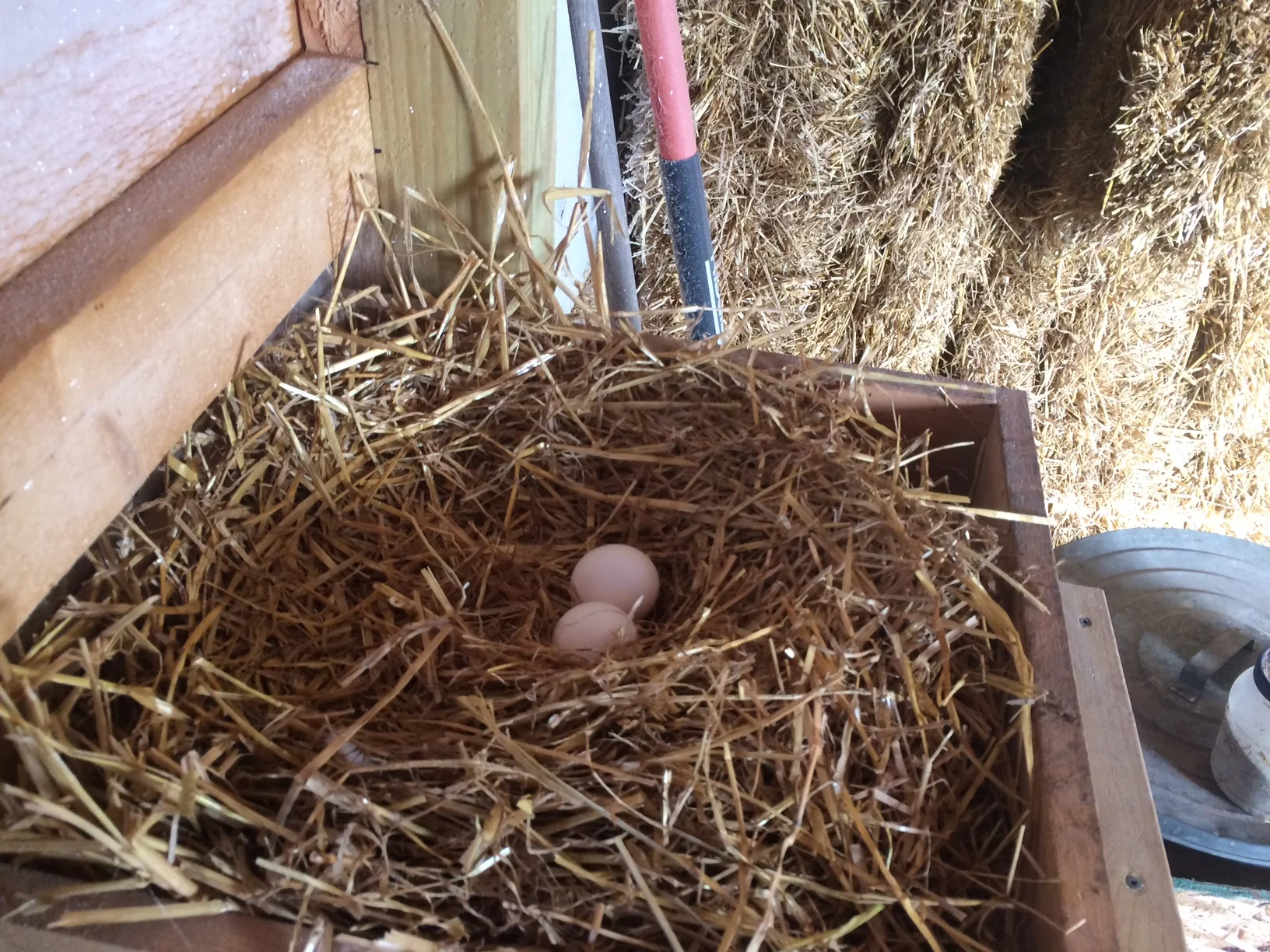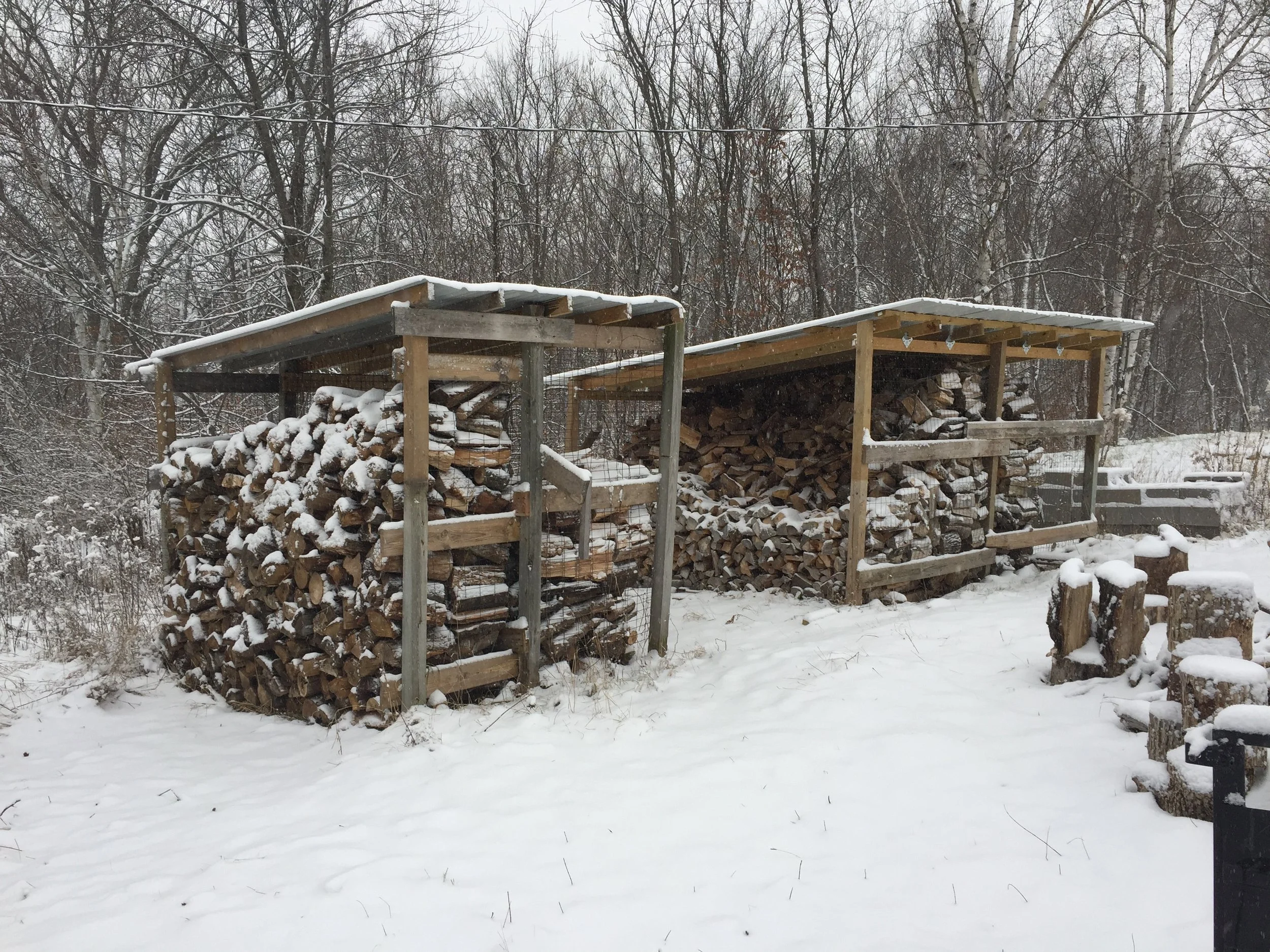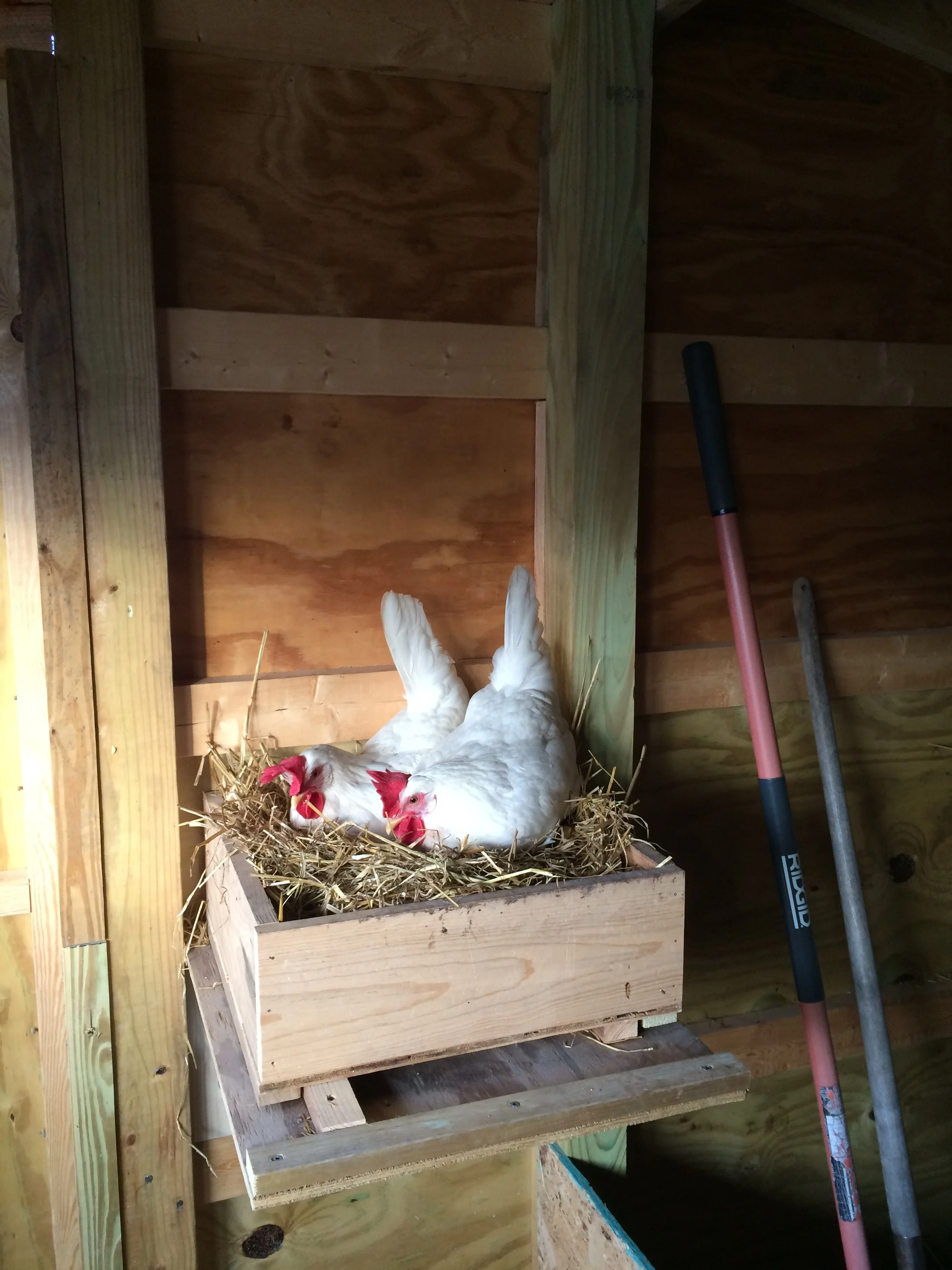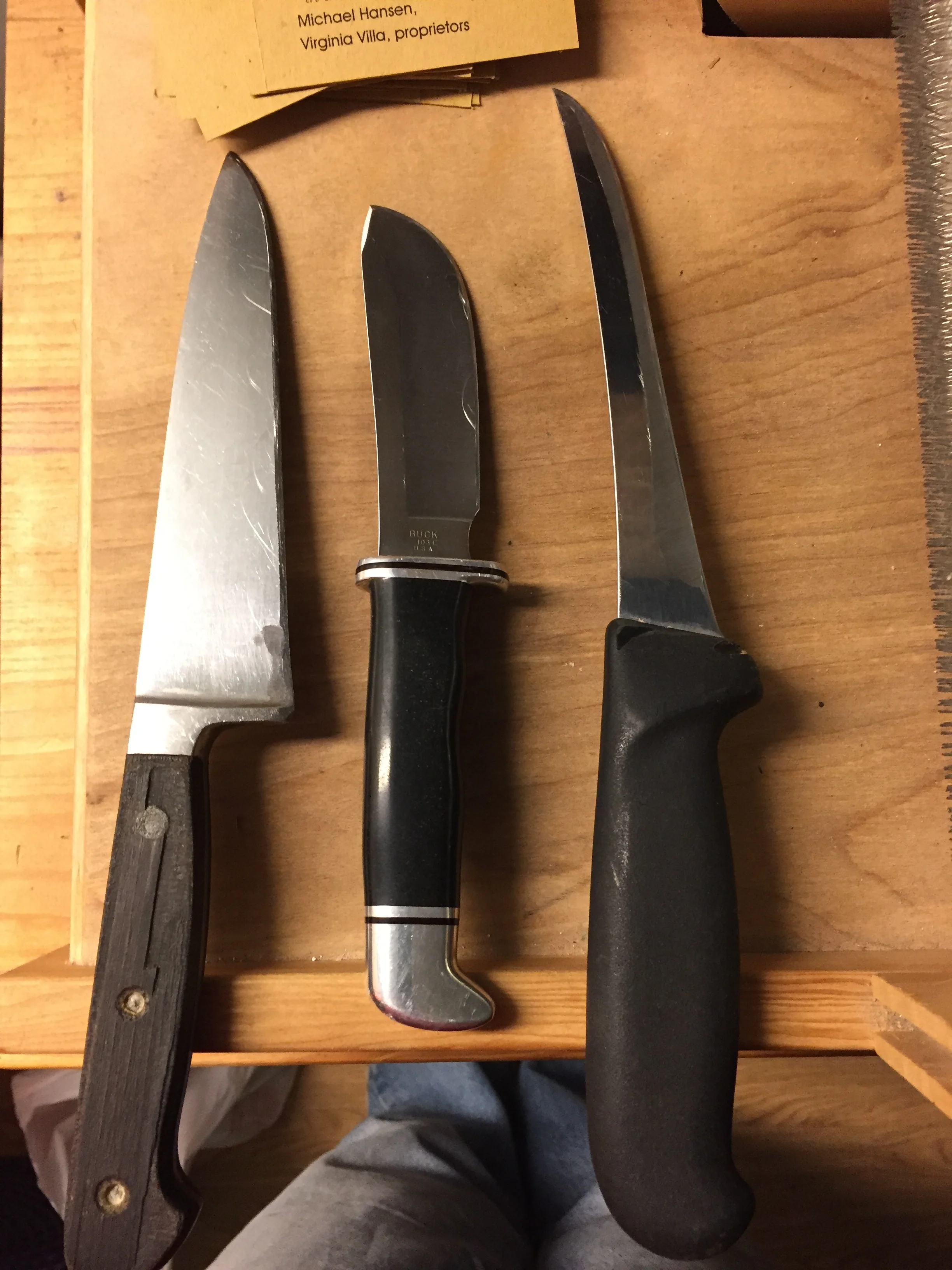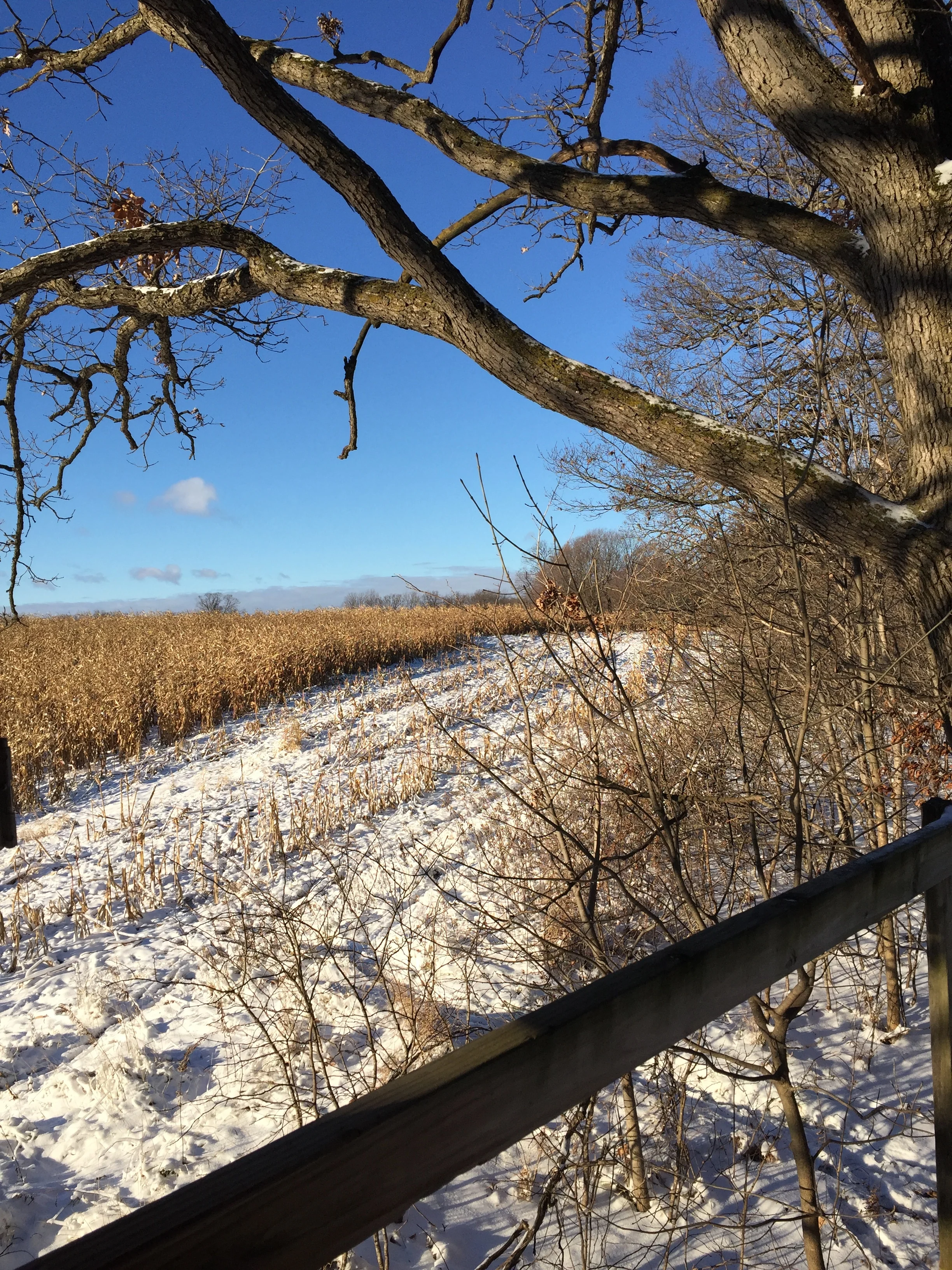That left us with 2 deer to take care of ourselves. And here is how we did it:
Michael was in charge of outdoors operations (and I do mean the kind that requires sharp cutting instruments!) while I did the inside work. After a deer is shot and field dressed, we hang it up by the neck and place a board or stick inside the cavity so that cold air can circulate and cool down the meat. This prevents spoilage.
"Field dressing" means opening the deer from sternum to the pubis, cutting through the bony girdle so that the hips can splay. You cut through the trachea and the hide around the anus and take out all the viscera, saving the heart and liver in the zip lock bag you have thoughtfully stored in your pocket for such an occasion. Then you get to drag your deer from the woods up to the house. If you are lucky, your hunting partner helps out with this bit. When you've caught your breath, you register the deer, which happened on-line this year.
Last year, we didn't get to process our deer immediately, and the weather turned very cold. This made getting the hide off the deer a major effort involving blow-driers and gymnastics. Vowing to avoid the problem this year, Michael skinned the deer, quartered them and then hung the quarters in the garage, where we had made space. He would then cart in a joint to me inside.
Once inside, I took meat off the bones and cut fat and excess connective tissue from the meat. I then cut the meat into steaks, stew meat, roasts, meat to grind into hamburger, and thin-sliced the hearts and took the membrane off the livers before slicing them up.
We can process one deer in a day, if we work 10 hours in a day. This includes taking time out to re-sharpen knives, and drink the occasional cup of coffee, but meals extend the day.
